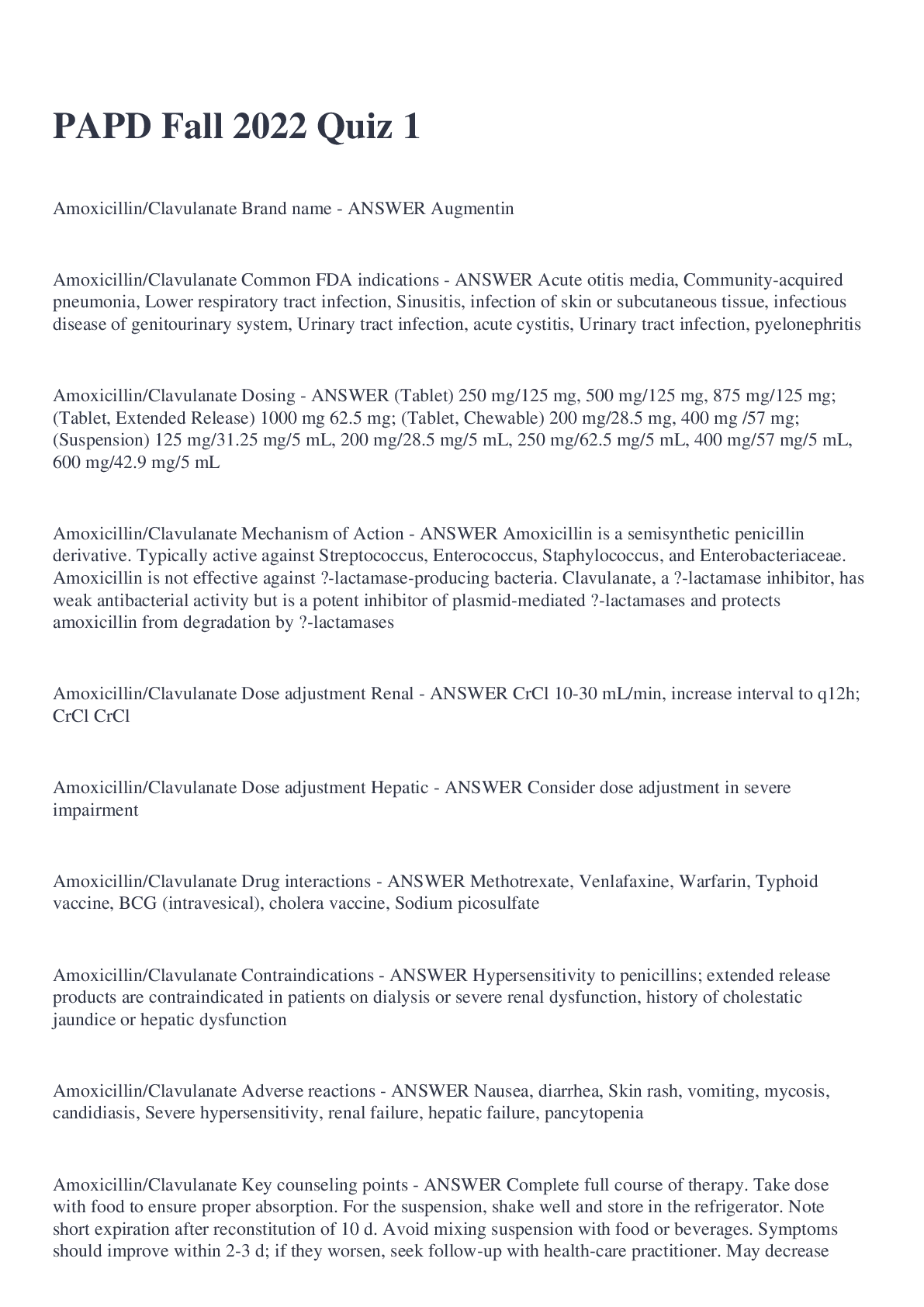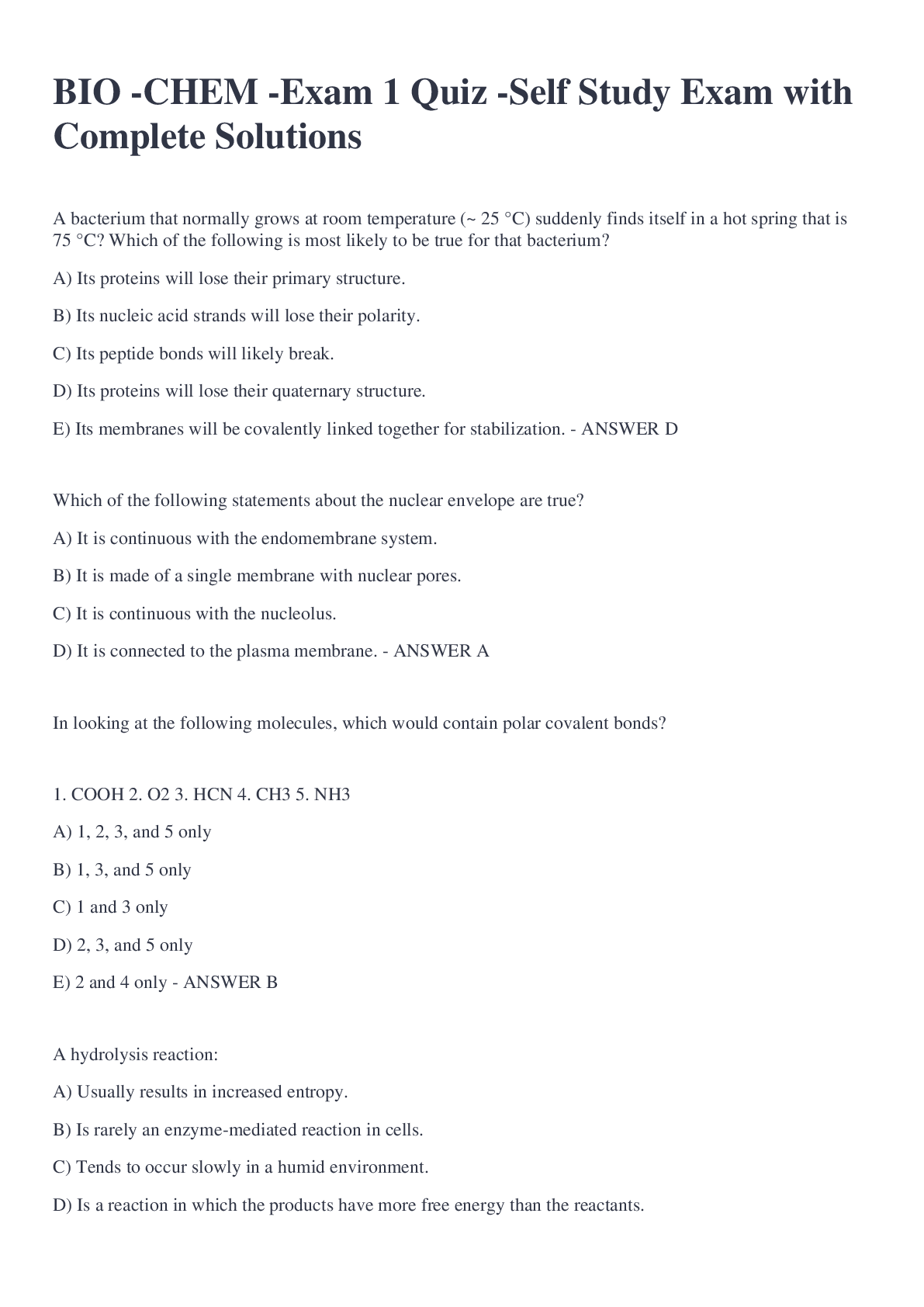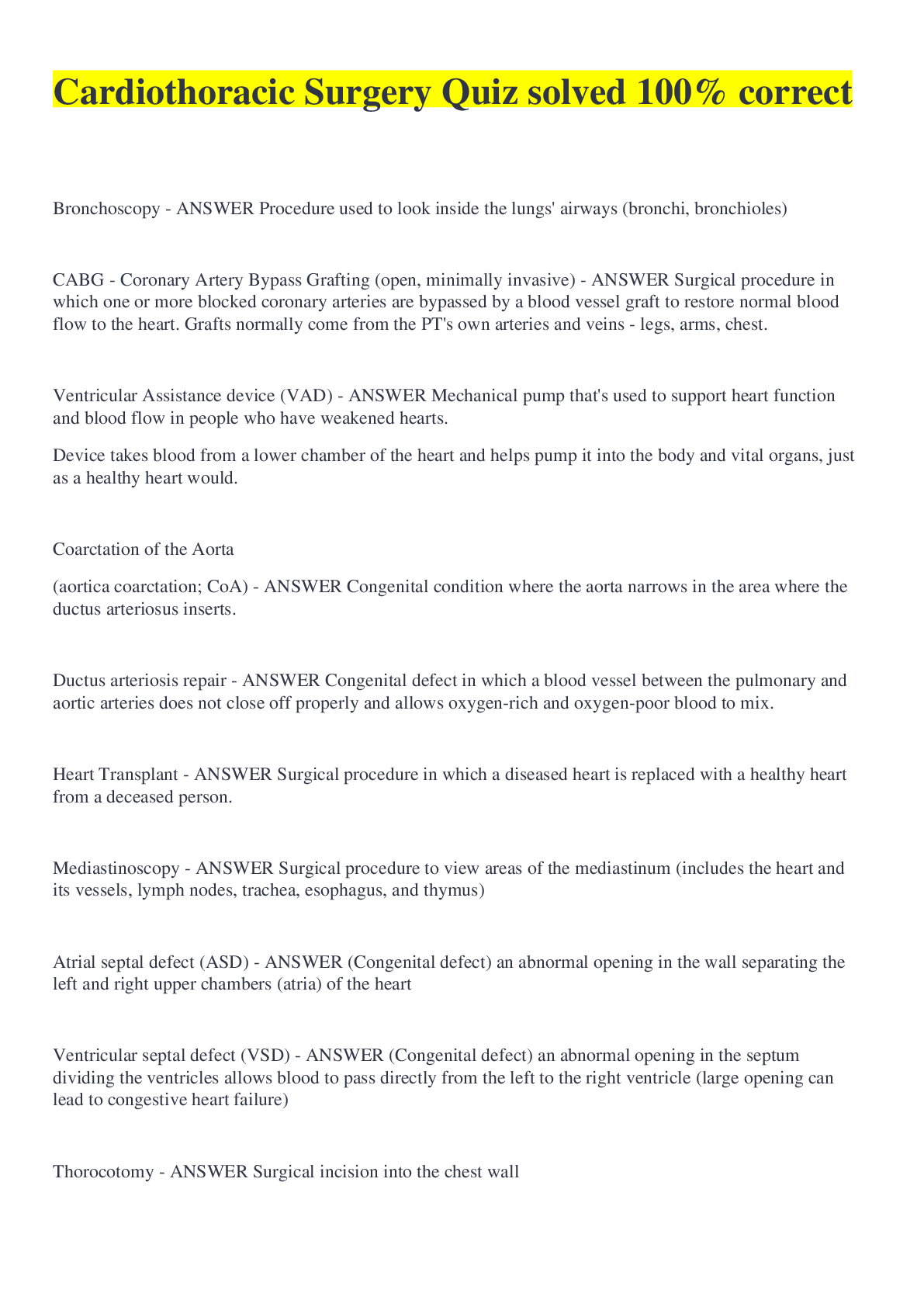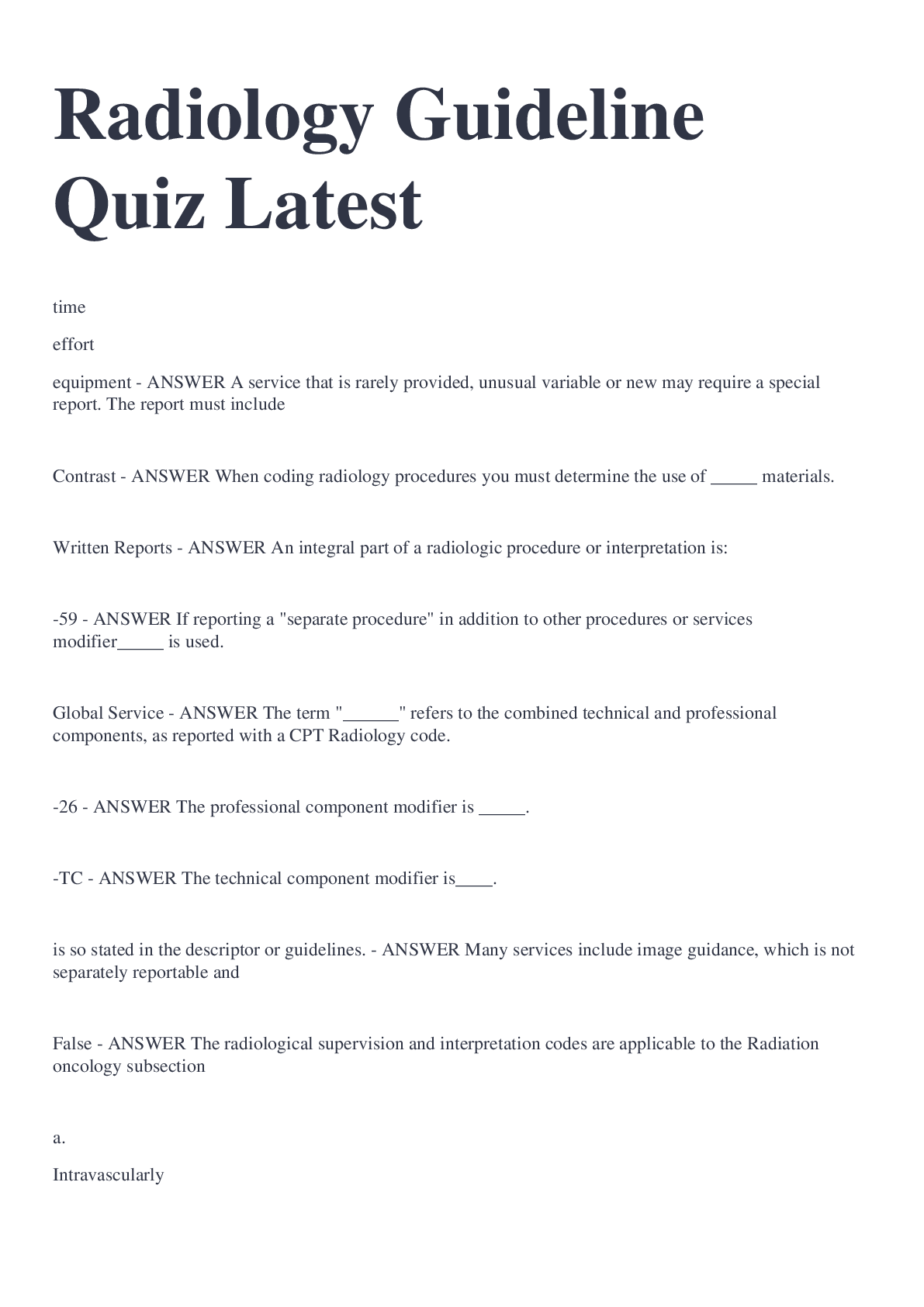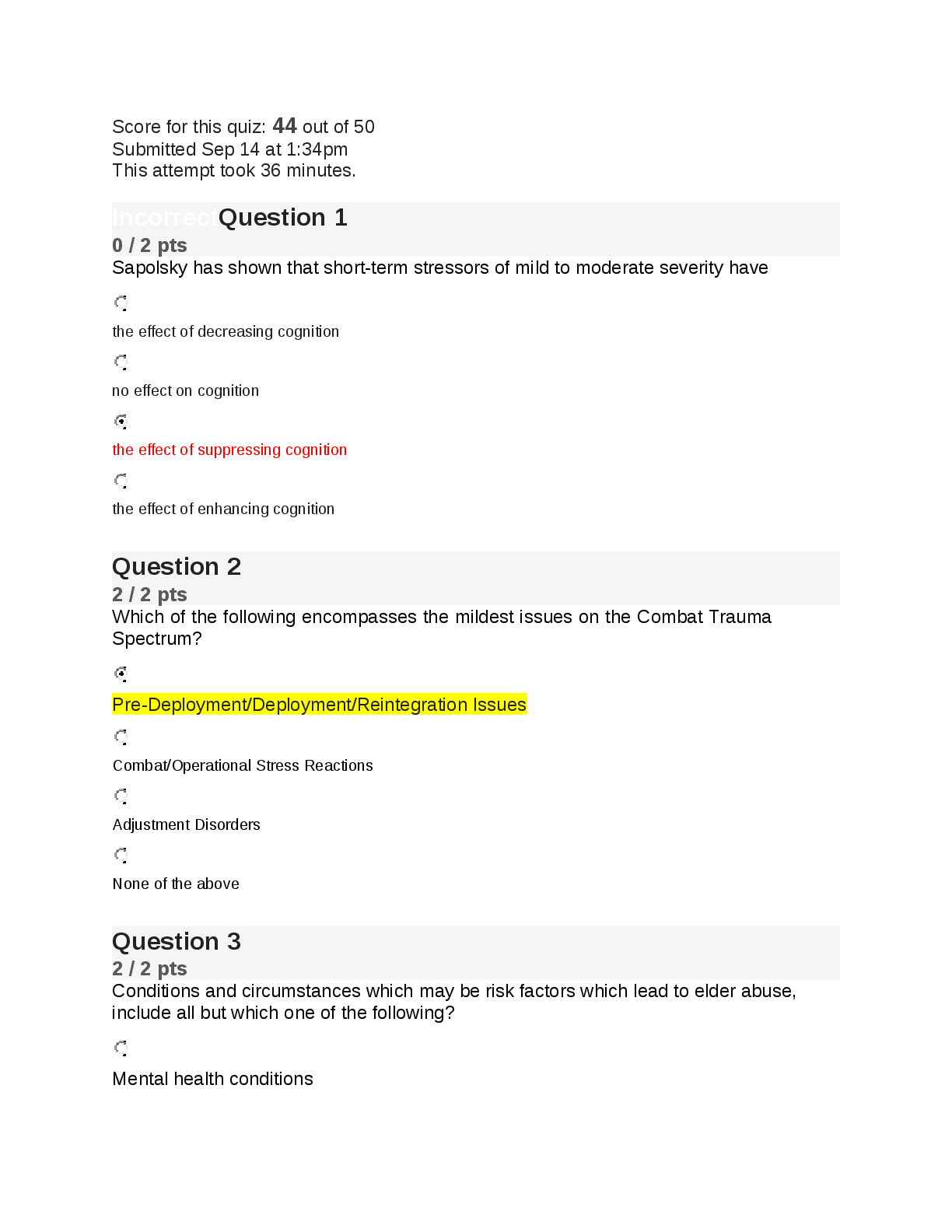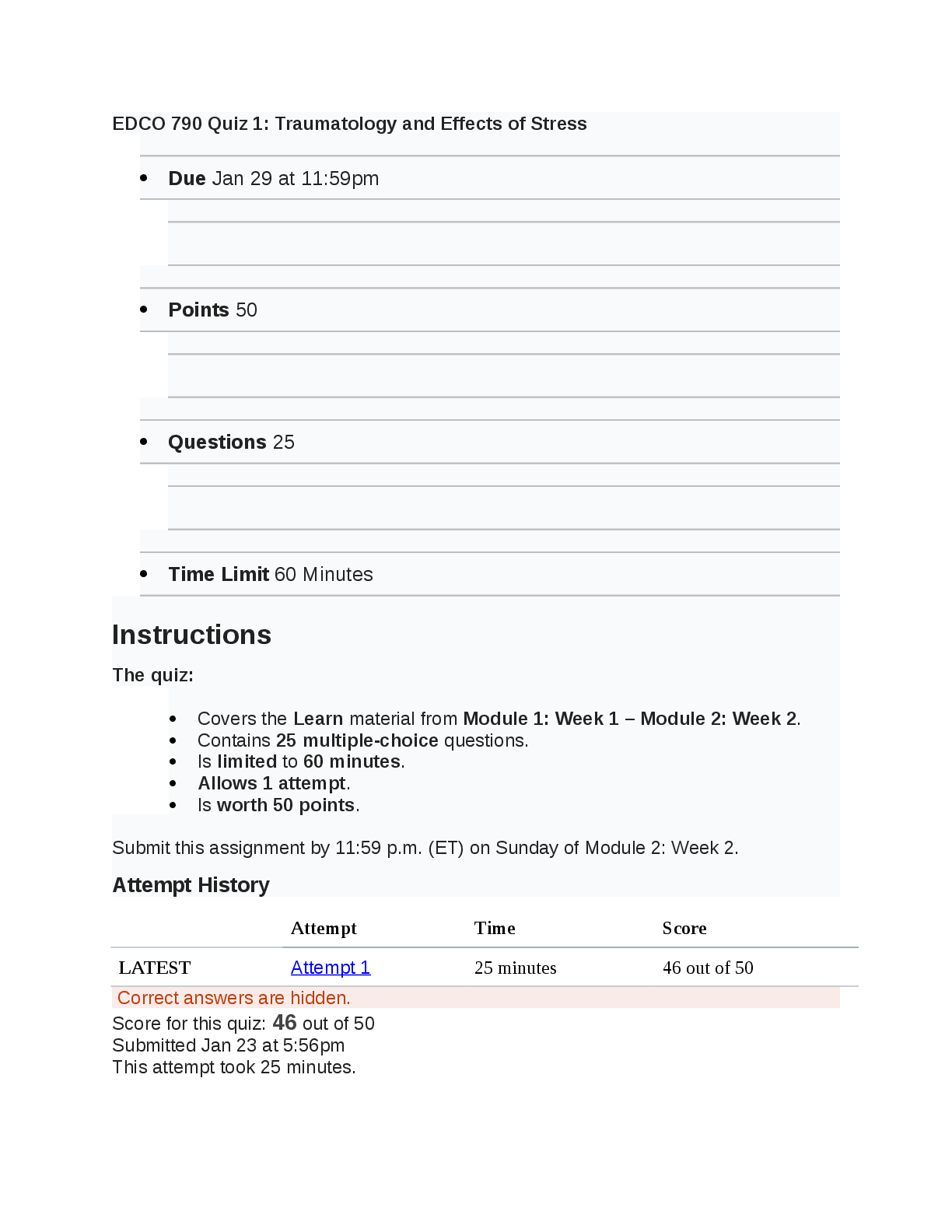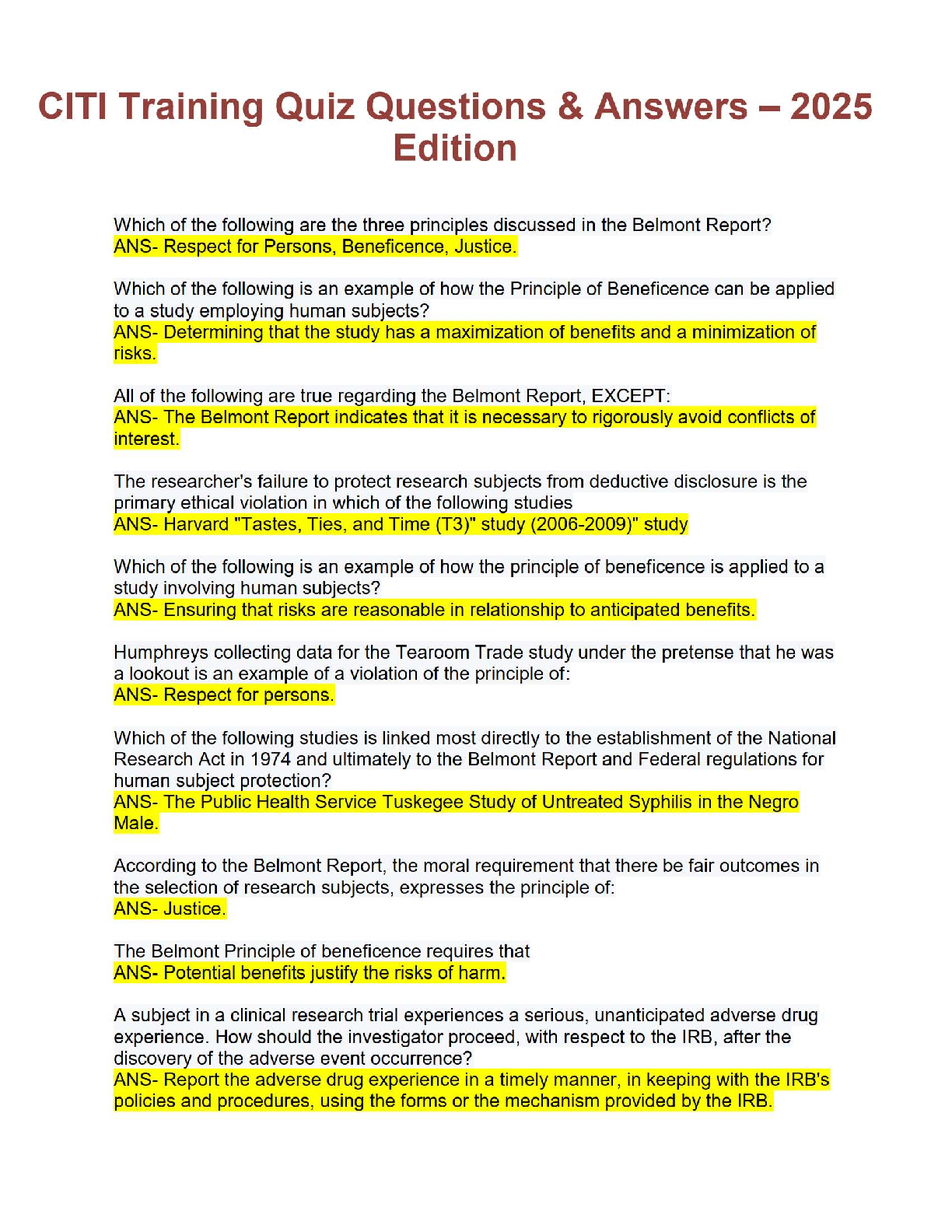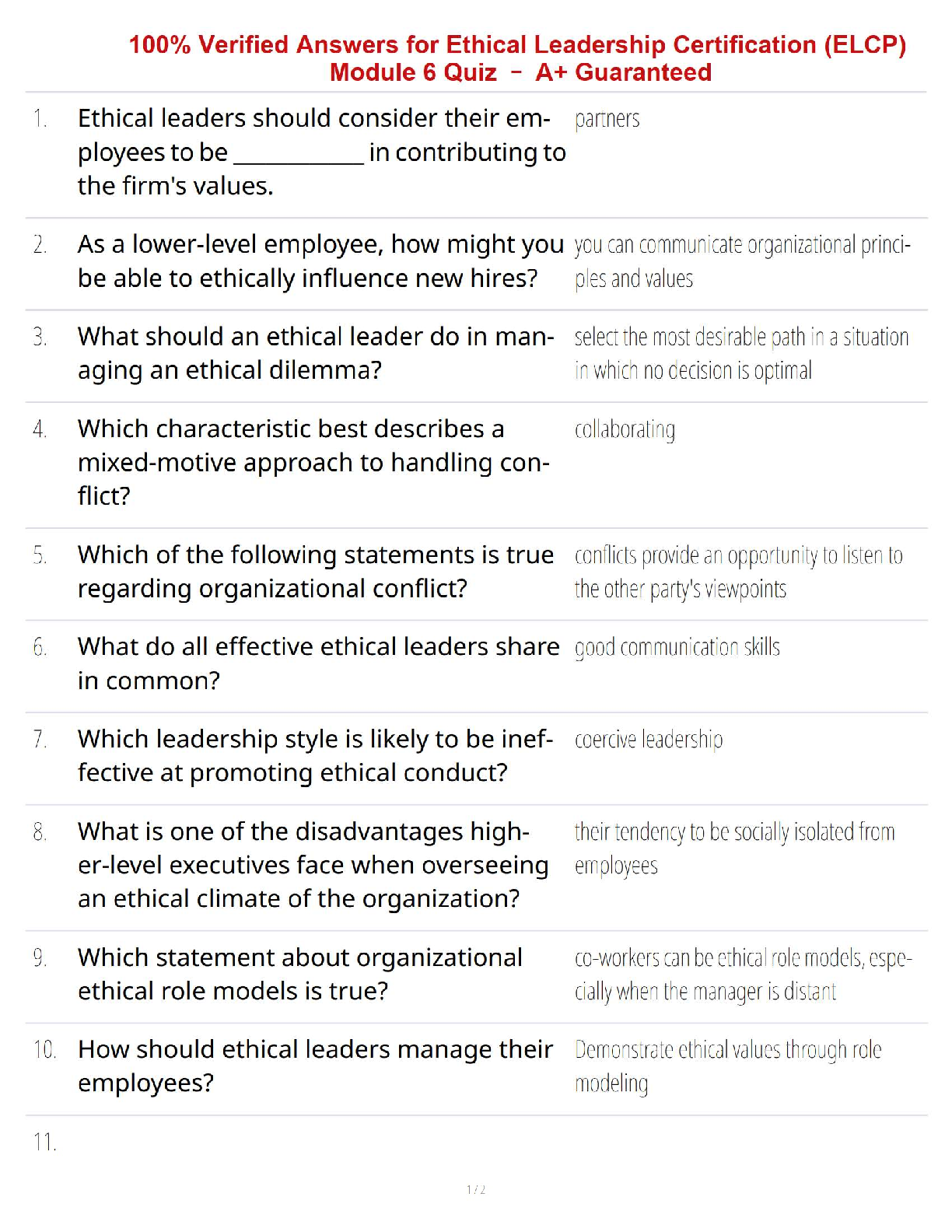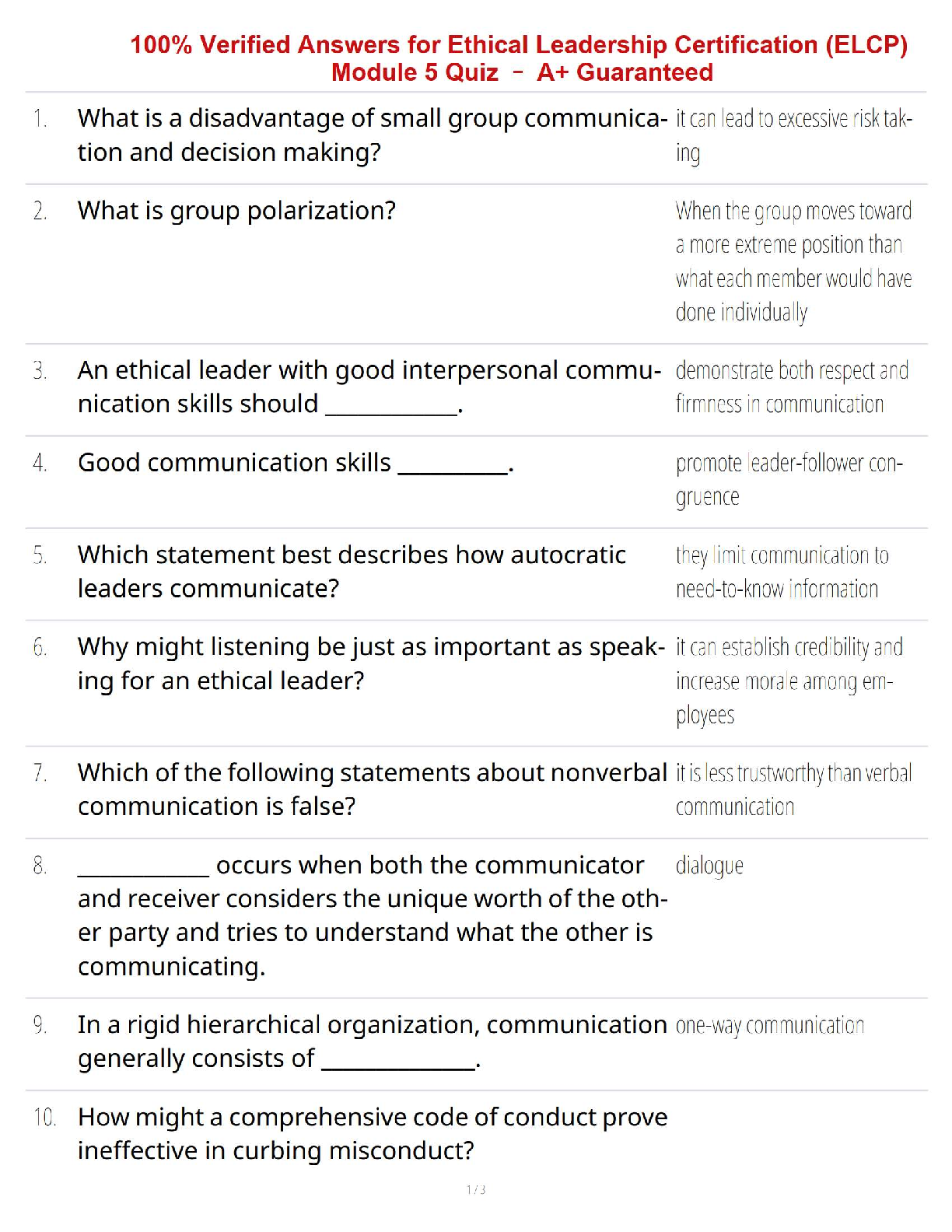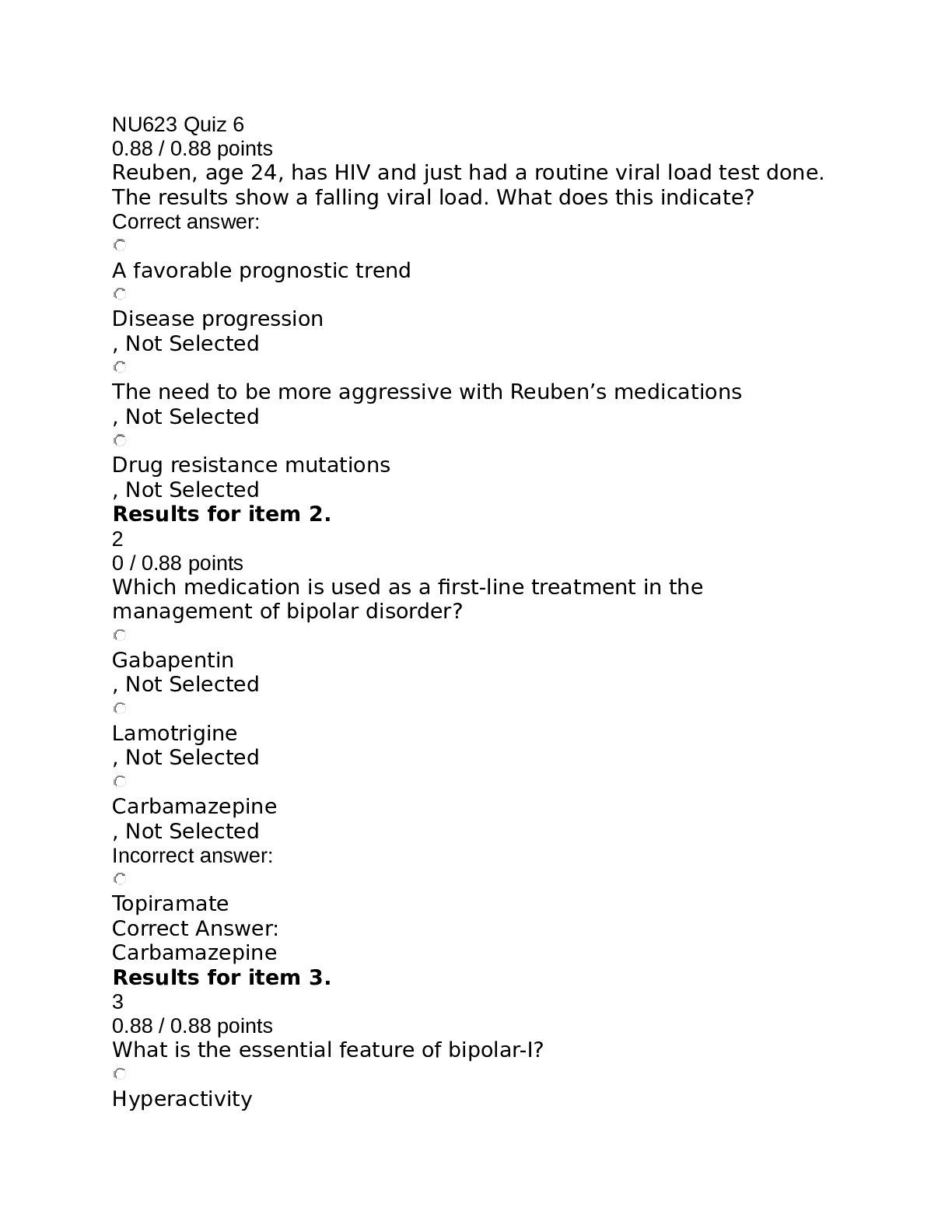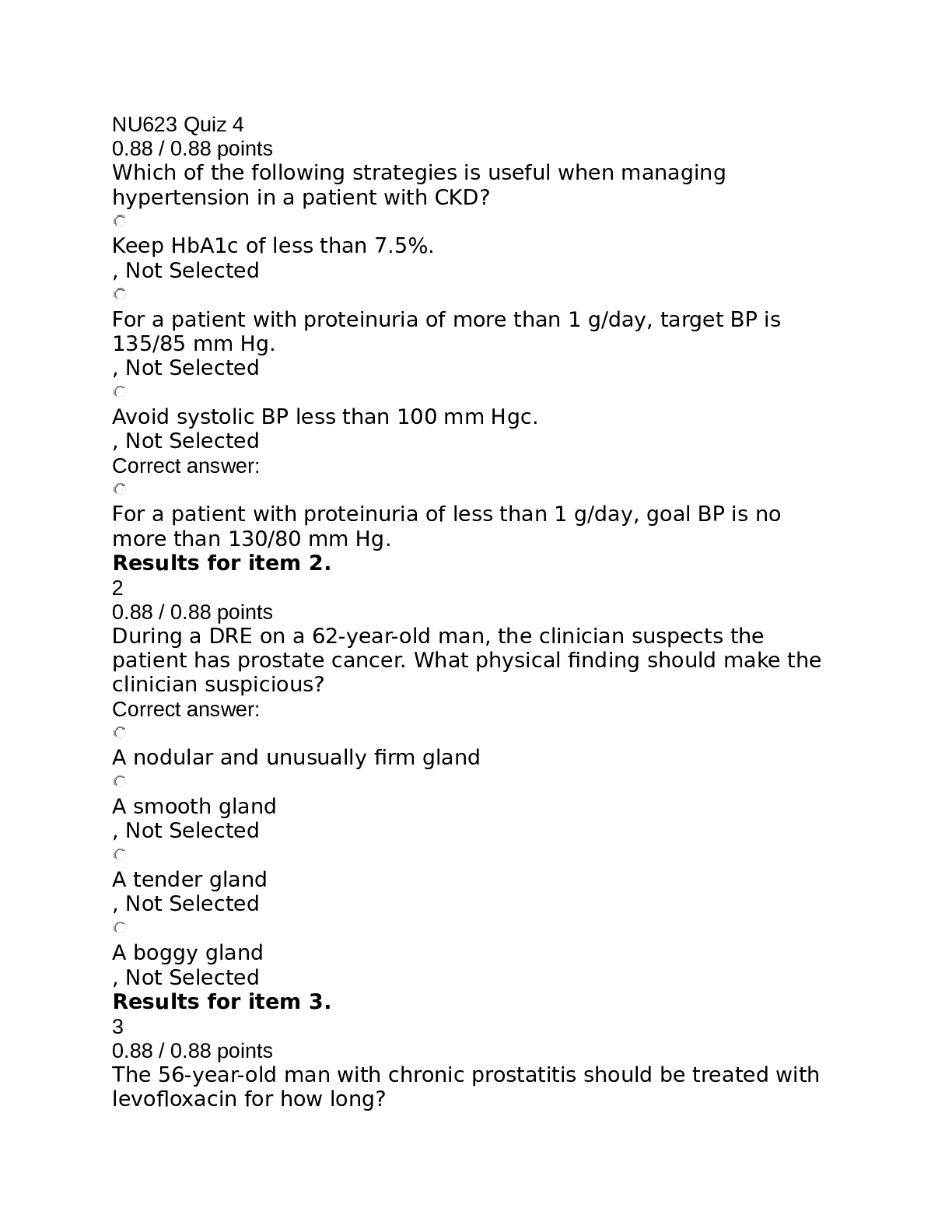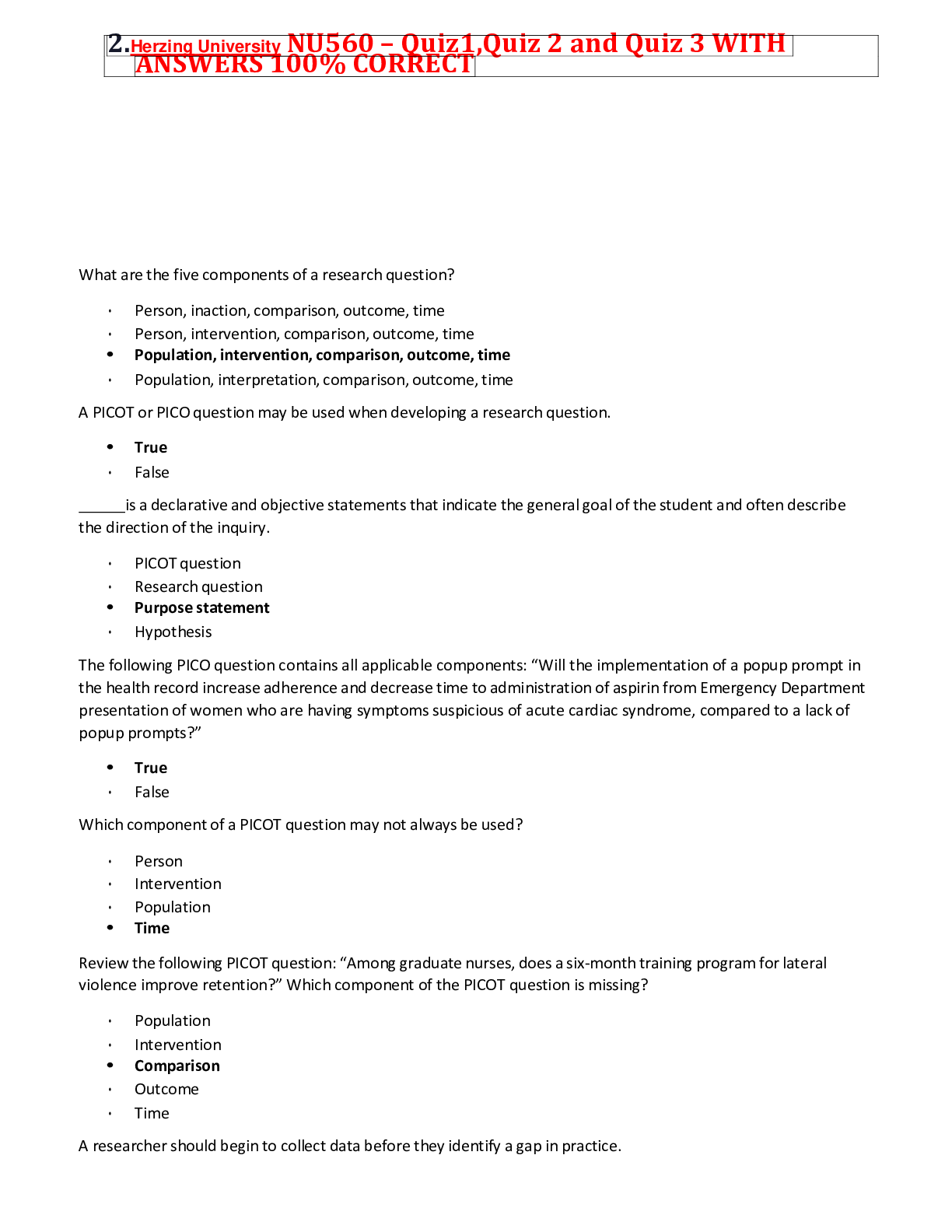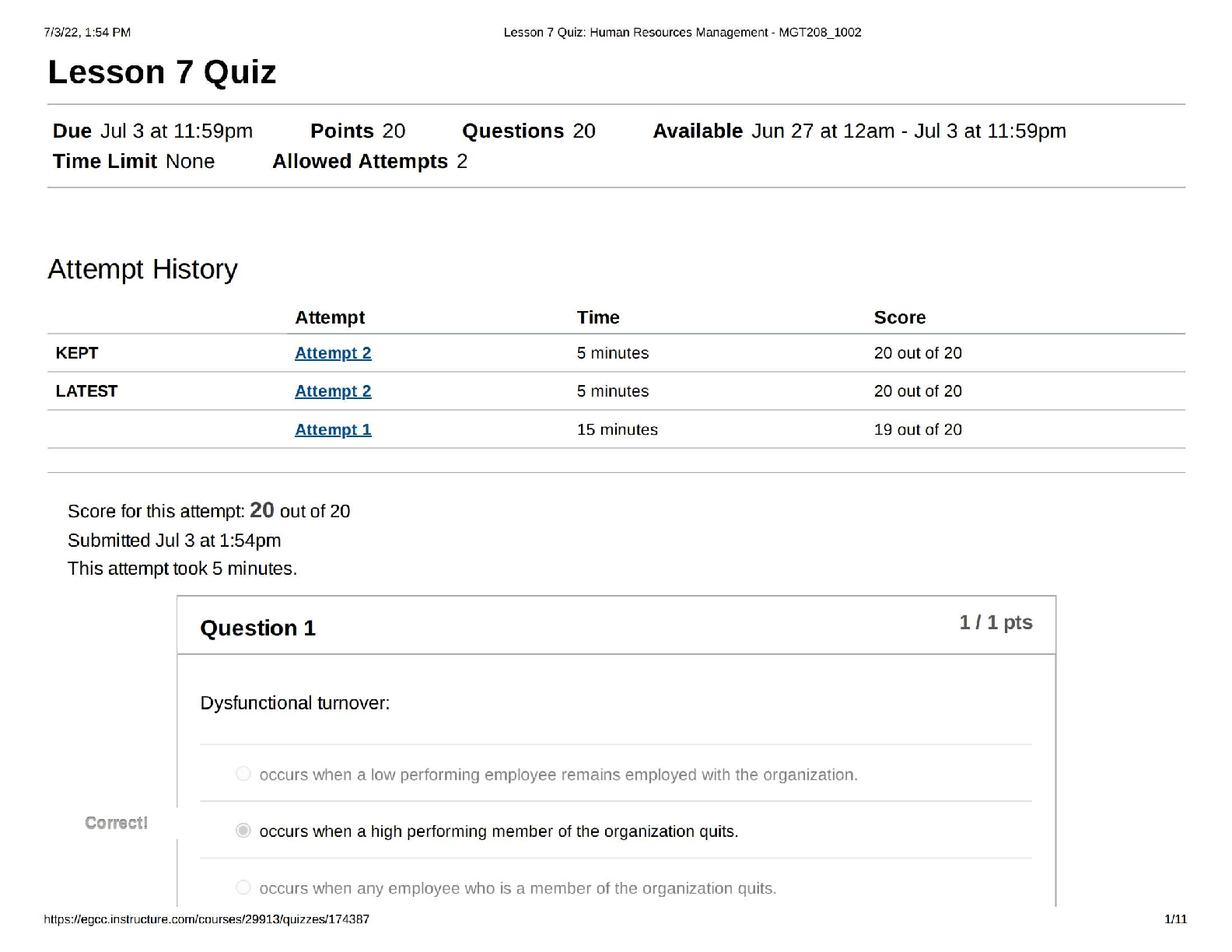
A Level Mathematics A H240/02: Mark Scheme 2021
$ 7
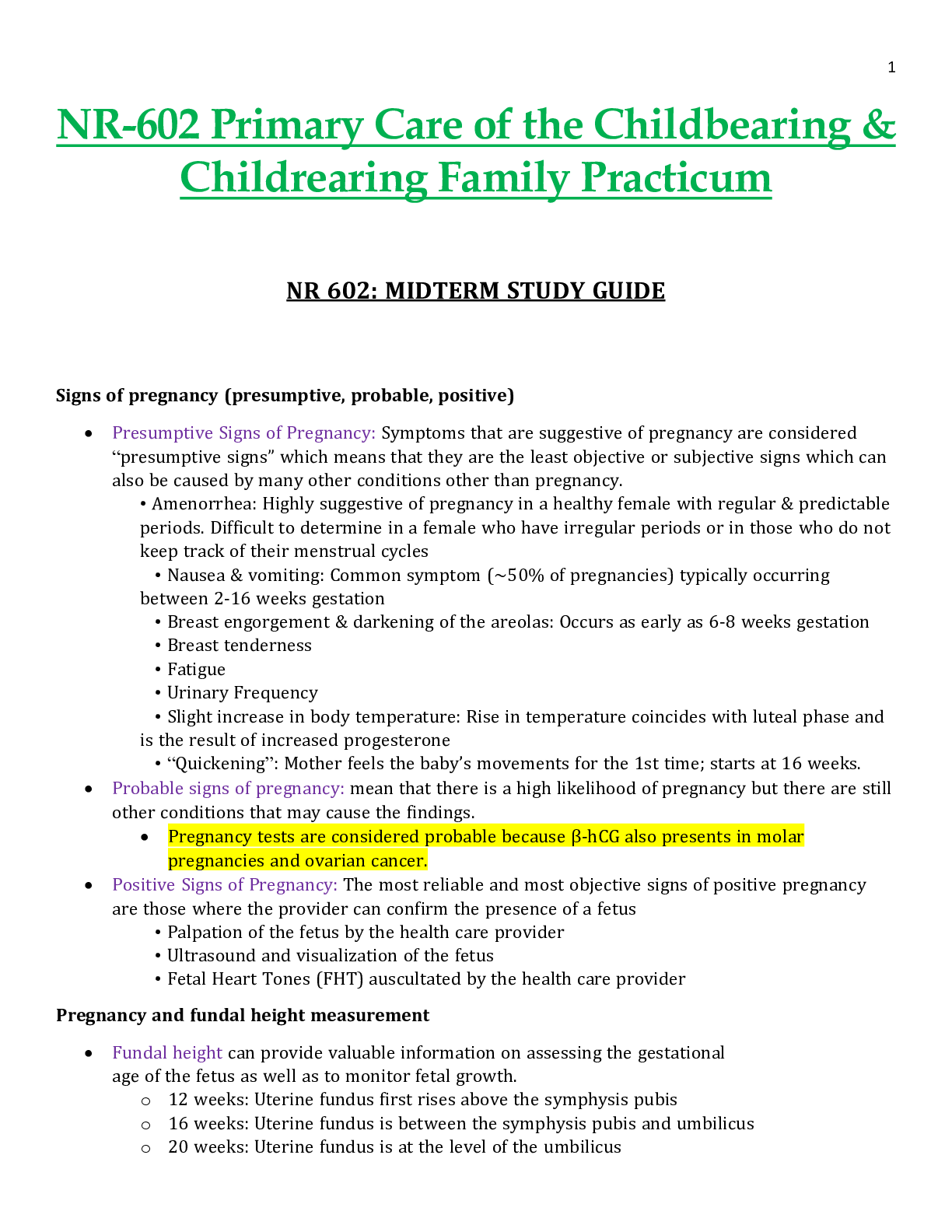
NR602 / NR-602 Midterm Exam Study Guide Updated: Primary Care of the Childbearing & Childrearing Family Practicum - Chamberlain
$ 10
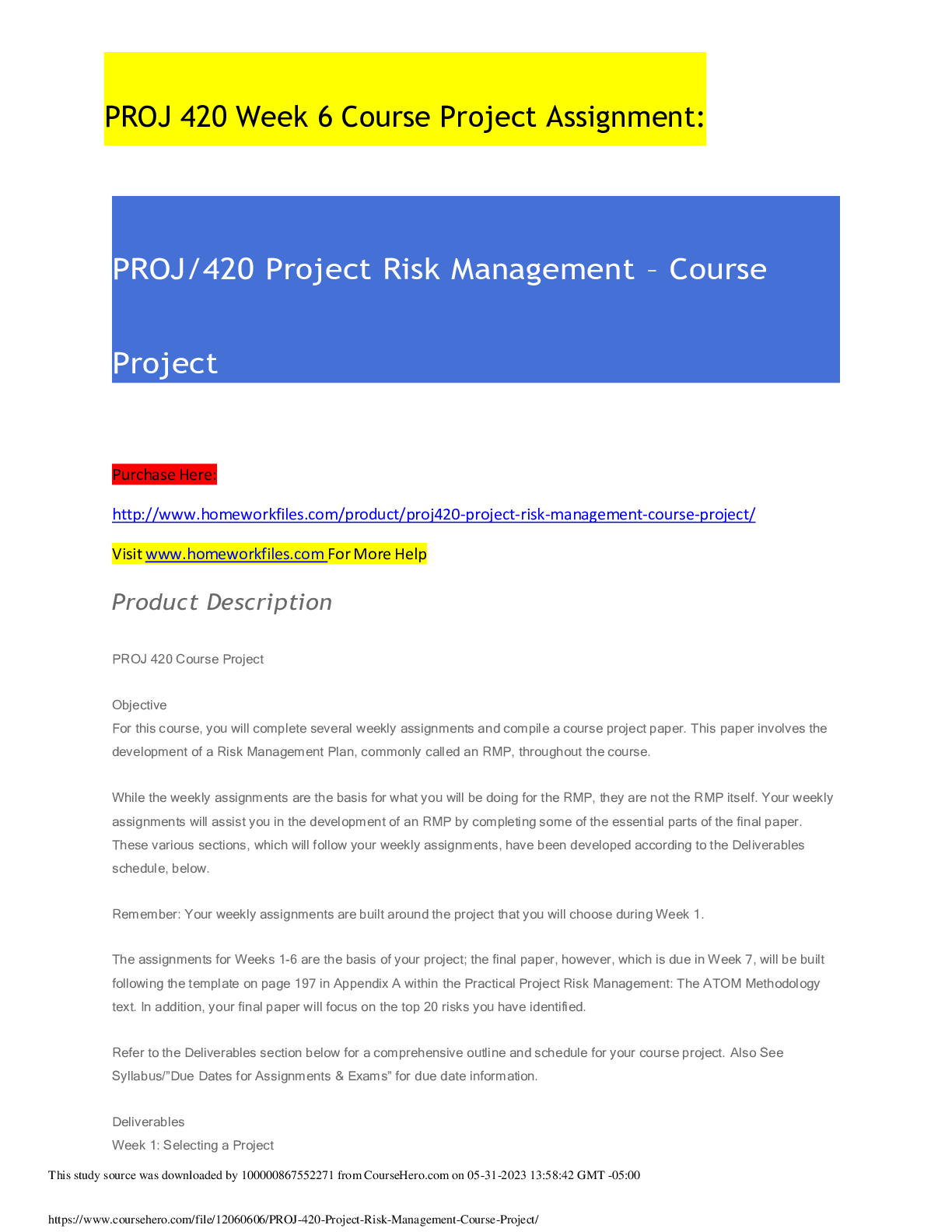
PROJ 420 Week 6 Course Project Assignment: Summary Risk Report
$ 10

Emergency Care 14th Edition By Daniel J. Limmer, Michael F. O'Keefe, Edward T. Dickinson (Solutions Manual )
$ 25

PN Hesi Exit new exam questions and answers mostly tested exam questions new docs 2020 chamberlain collage
$ 10.5
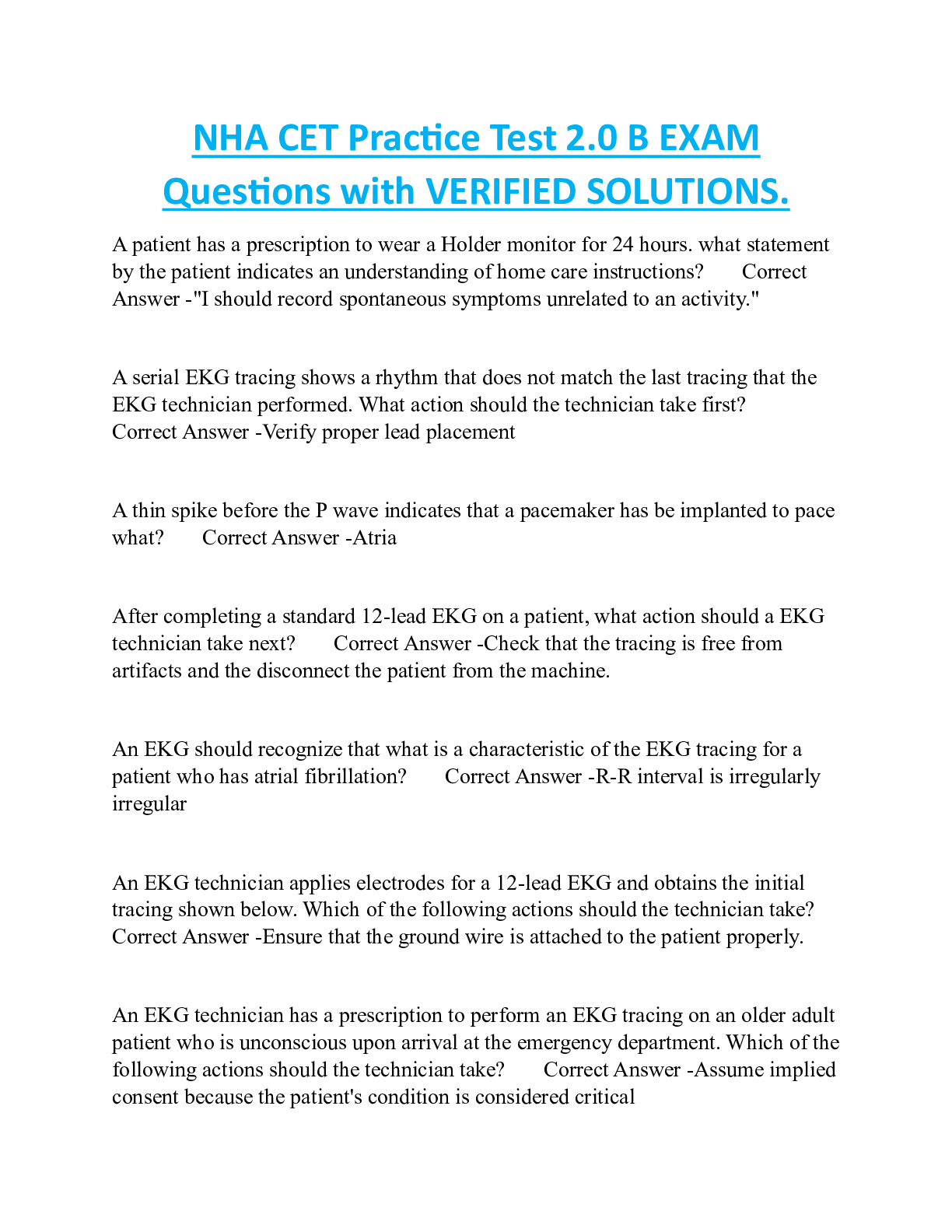
NHA CET Practice Test 2.0 B EXAM Questions with VERIFIED SOLUTIONS
$ 10
.png)
SHRM-CP Practice Exam Questions and Answers Already Passed
$ 15
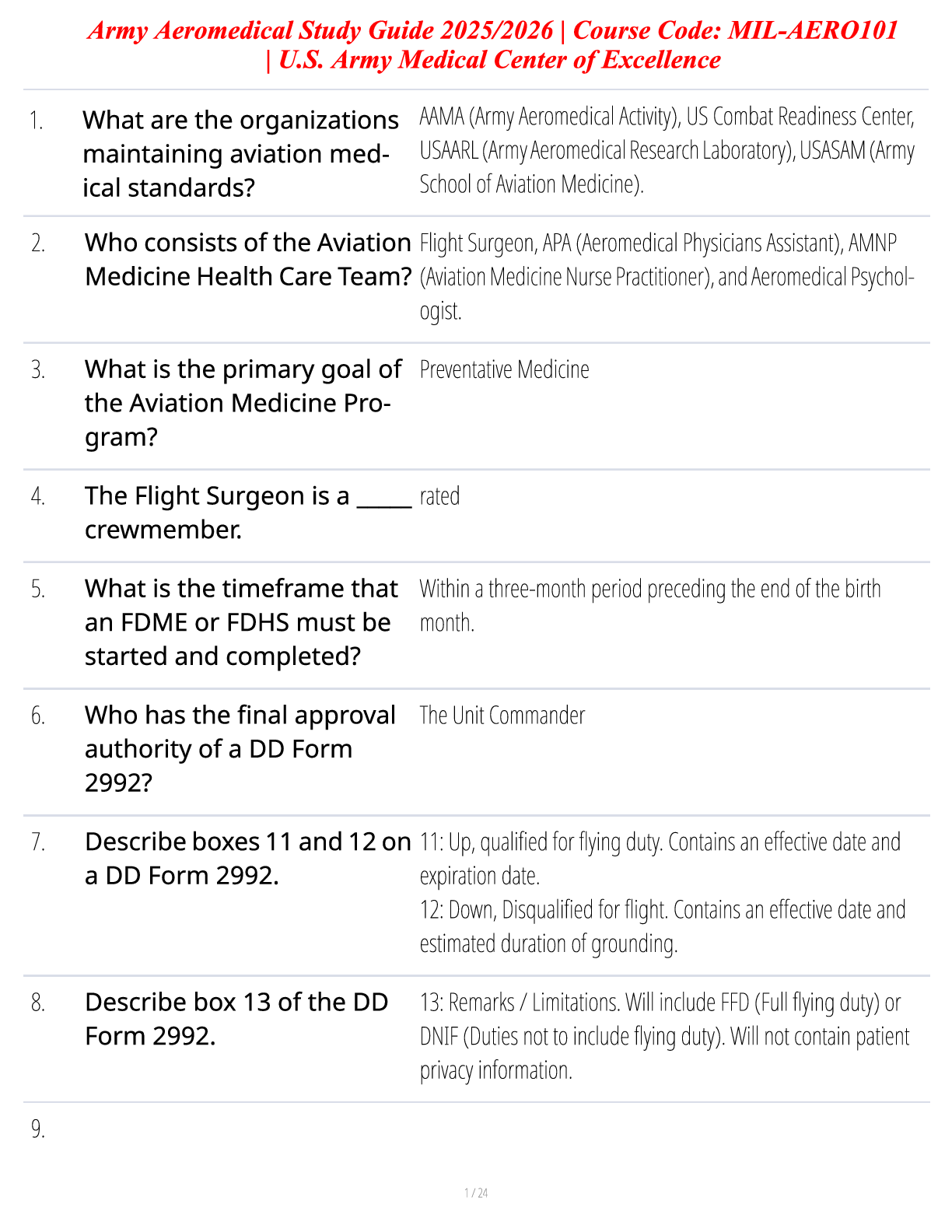
Army Aeromedical Study Guide 2025/2026 | Course Code: MIL-AERO101 | U.S. Army Medical Center of Excellence
$ 25
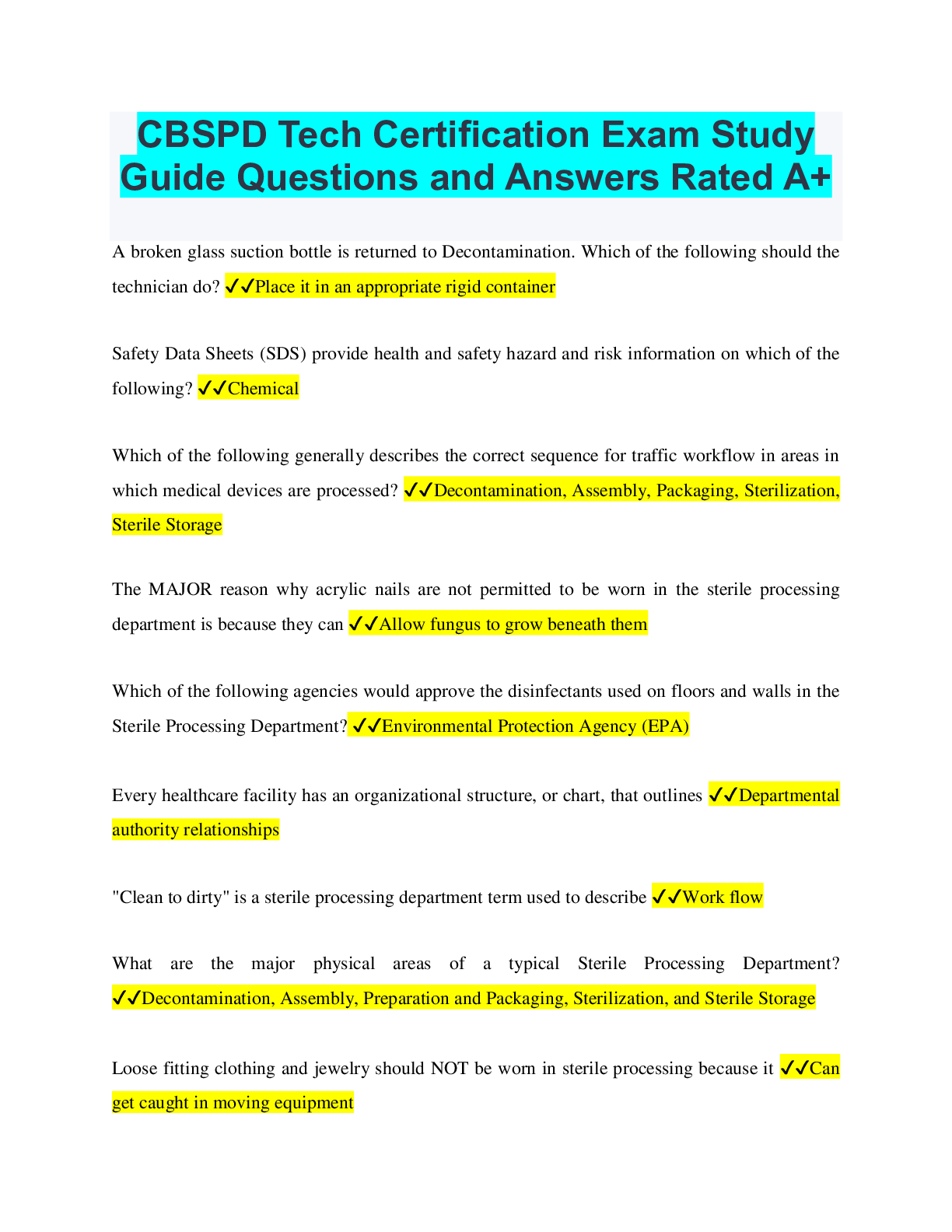
CBSPD Tech Certification Exam Study Guide Questions and Answers Rated A+
$ 5
.png)
NR 340 Week 3 Evolve Questions & Answers
$ 30

Chapter 10: Business Analytics_ Data Analysis _ Decision Making
$ 3

Exam (elaborations) CECS 6605
$ 14.5

Practical Law of Architecture, Engineering, and Geoscience, Third Canadian Edition, Test Bank by Brian M. Samuels, Doug R. Sanders
$ 15

MN 553 Unit 9 Quiz with Answers | 100% CORRECT
$ 13
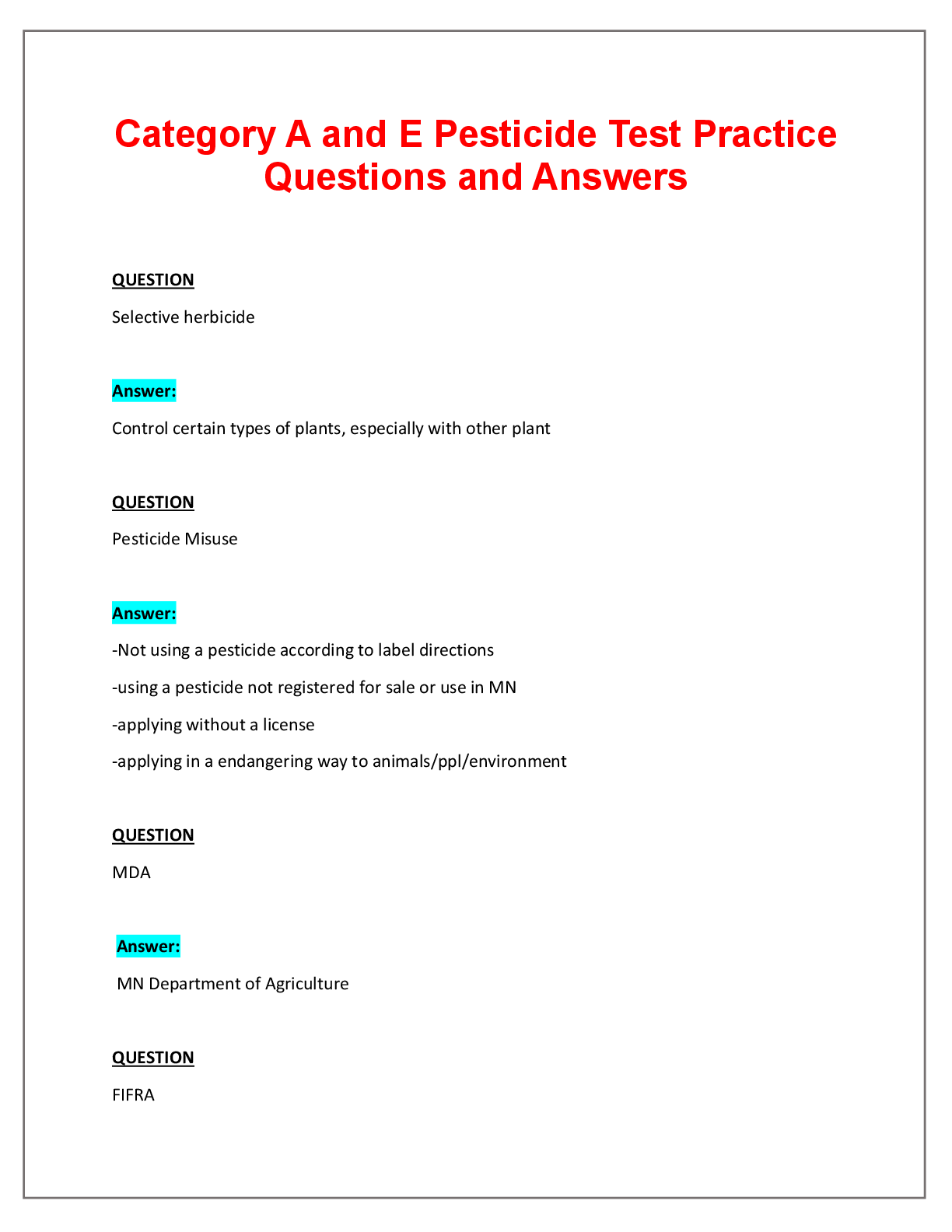
Category A and E Pesticide Test Practice Questions and Answers
$ 11
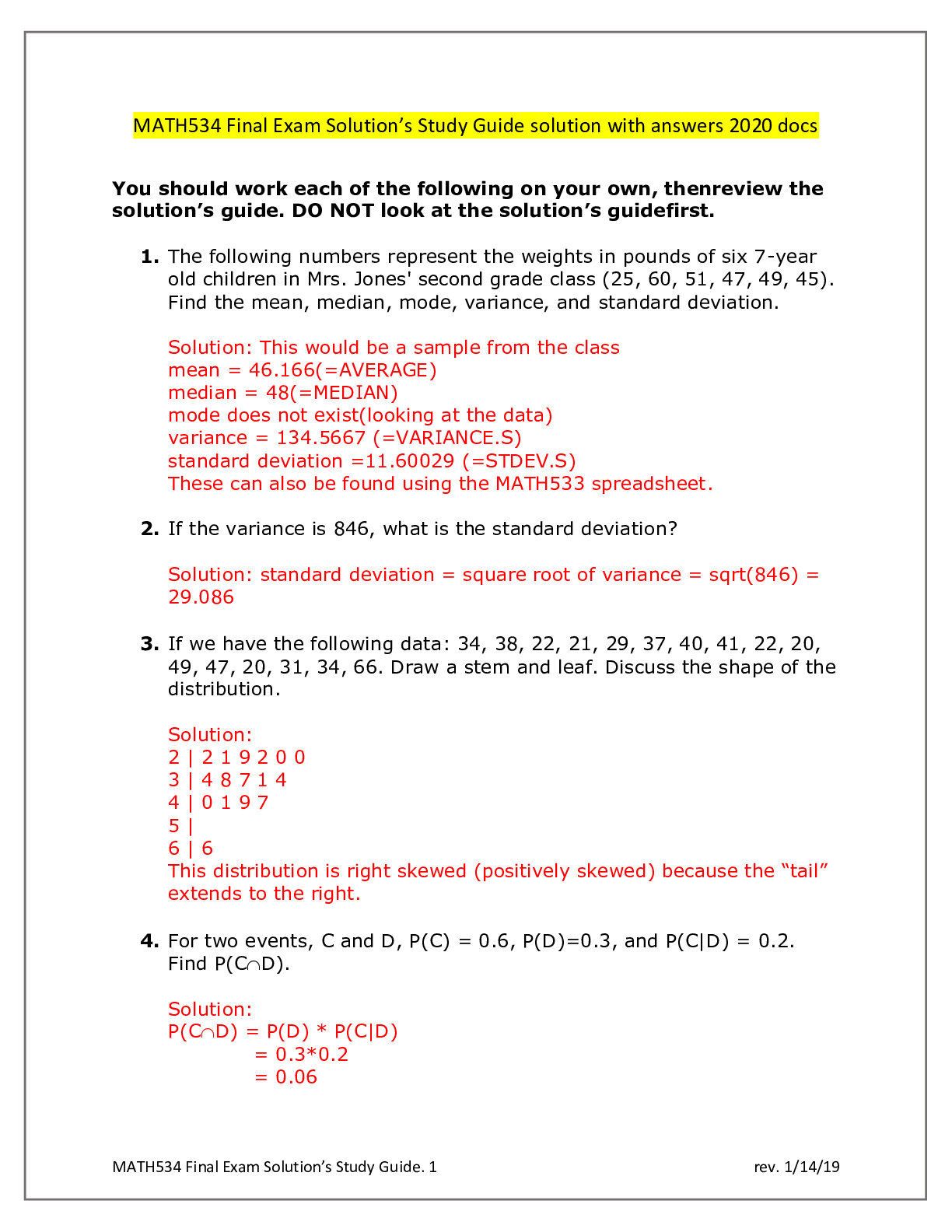
MATH534 Final Exam Solution’s Study Guide solution with answers 2020 docs
$ 6

eBook [PDF] Niche Construction How Life Contributes to Its Own Evolution 1st Edition By John Odling-Smee
$ 29
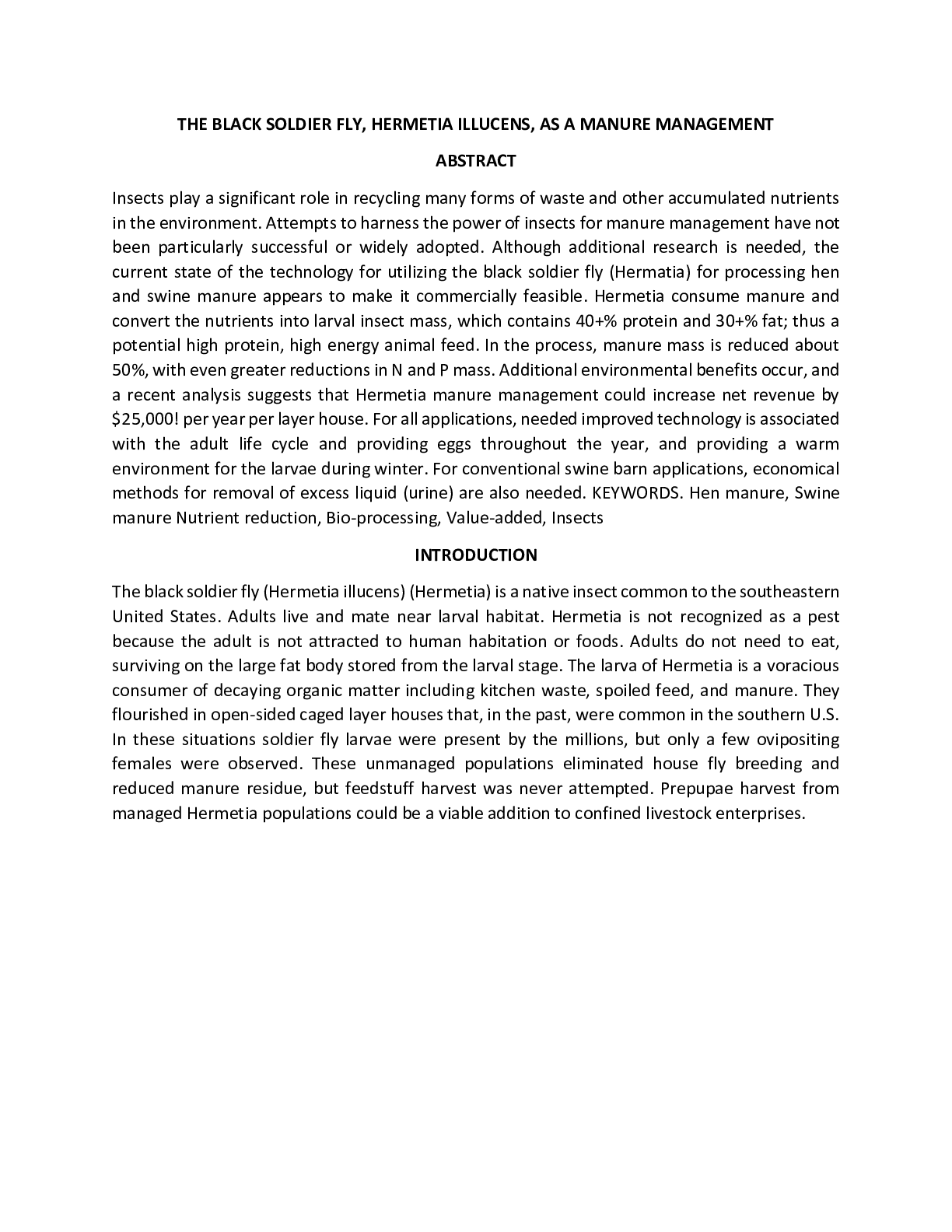
THE BLACK SOLDIER FLY, HERMETIA ILLUCENS, AS A MANURE MANAGEMENT AND POULTRY/PIG FEED
$ 55
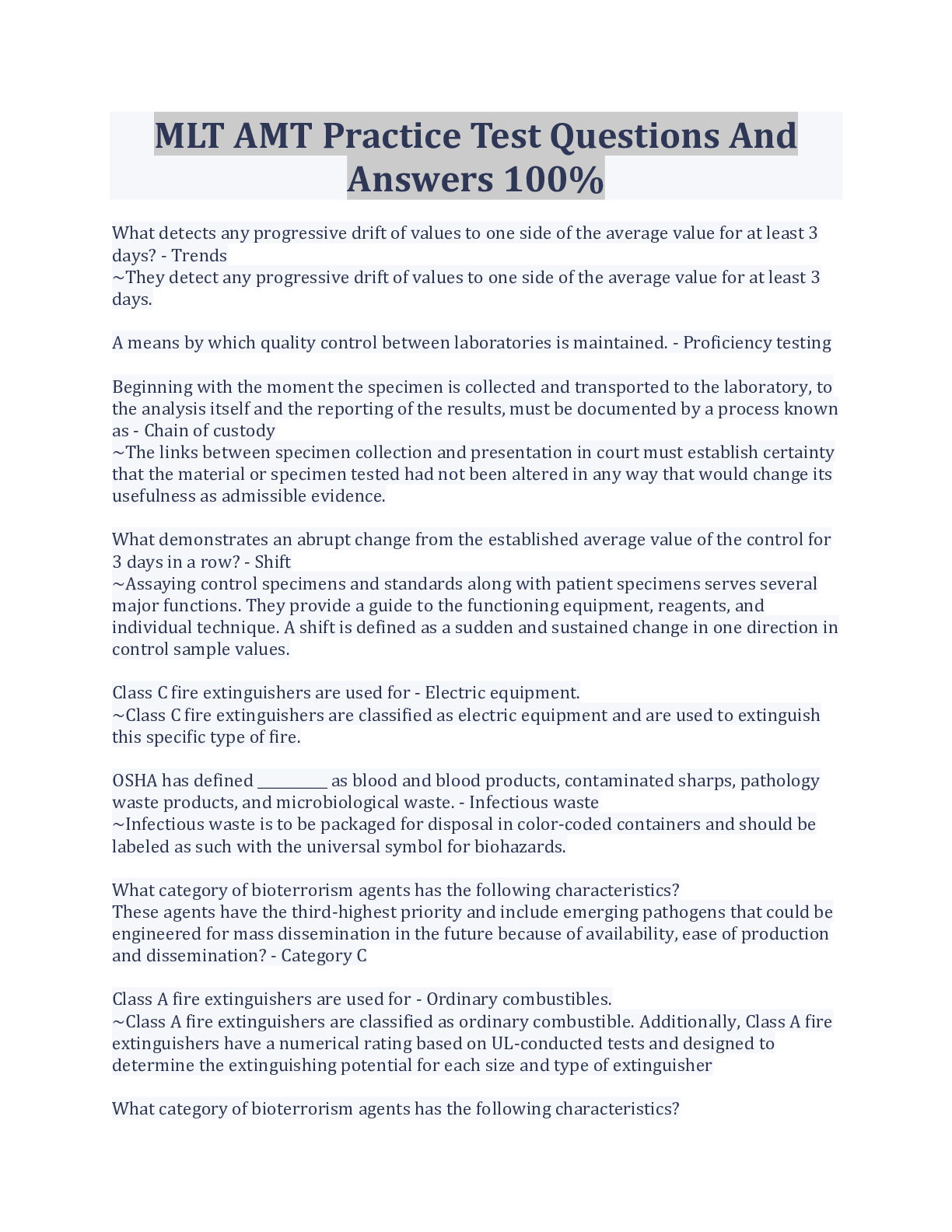
MLT AMT Practice Test Questions And Answers 100%
$ 13.5

Medical Scribe- Final exam review questions and answers 100% pass
$ 10

OCI Architect 2022 Associate Practice Exam with complete solution
$ 8
.png)
Pearson Edexcel Merged Question Paper + Mark Scheme (Results) Summer 2022 Pearson Edexcel GCSE In Religious Studies B (1RB0) Paper 3: Area of Study 3 – Religion, Philosophy and Social Justice Option 3B: Christianity
$ 6

ATI RN Comprehensive Predictor 2019 Form A Test Bank (180 Questions & Answers) A+ Help
$ 14
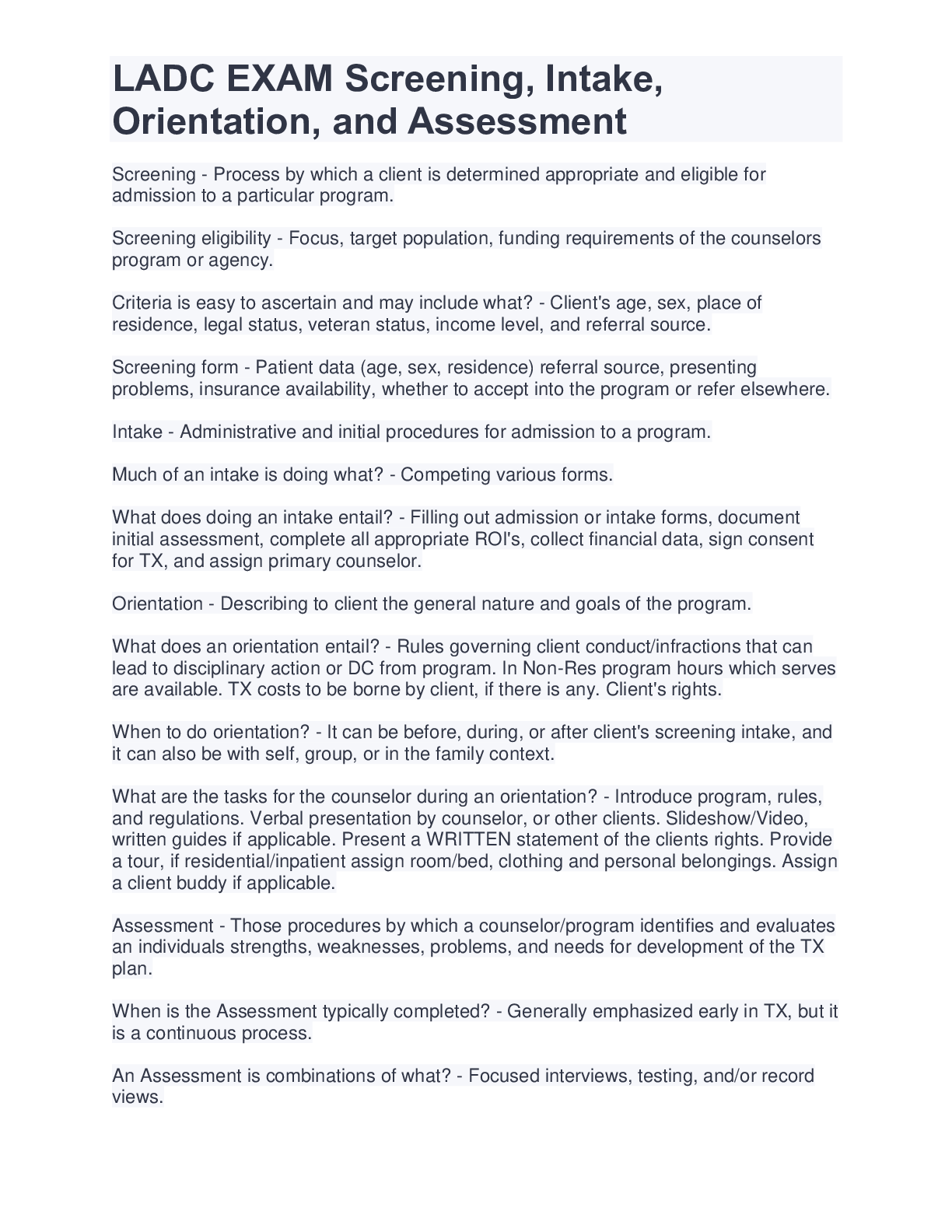
LADC EXAM Screening, Intake, Orientation, and Assessment
$ 11
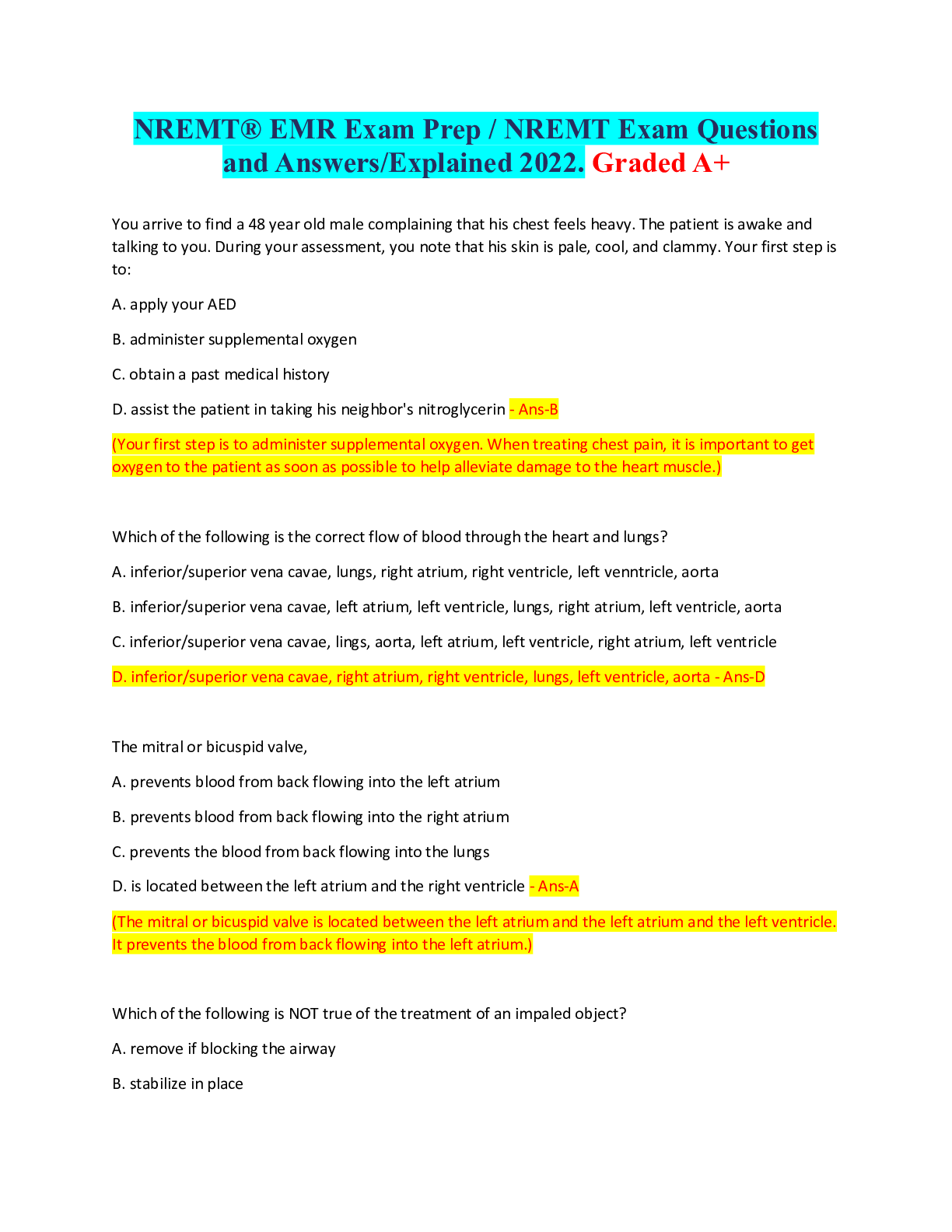
NREMT Practice Exam QUESTIONS WITH ANSWERS. GRADED A+
$ 10

Pearson Edexcel International GCSE (9–1). Physics UNIT: 4PH1 PAPER: 2P. graded A+
$ 9

BIO201 LAB 9 THE ENDOCRINE SYSTEM[ ALL ANSWERS 100% CORRECT]
$ 4

eBook PDF Psychology and Law Research and Practice 2nd Edition By Curtis Bartol, Anne Bartol
$ 30

PMH-C – Perinatal Mental Health Certification – Chamberlain College of Nursing – 2025 Real Exam Questions and Answers with Rationales
$ 35.5

CIS 524 Case Study – User Interfaces, Complete A+ guide.
$ 13

Predictor Exam Questions with Answers and Explanations
$ 30
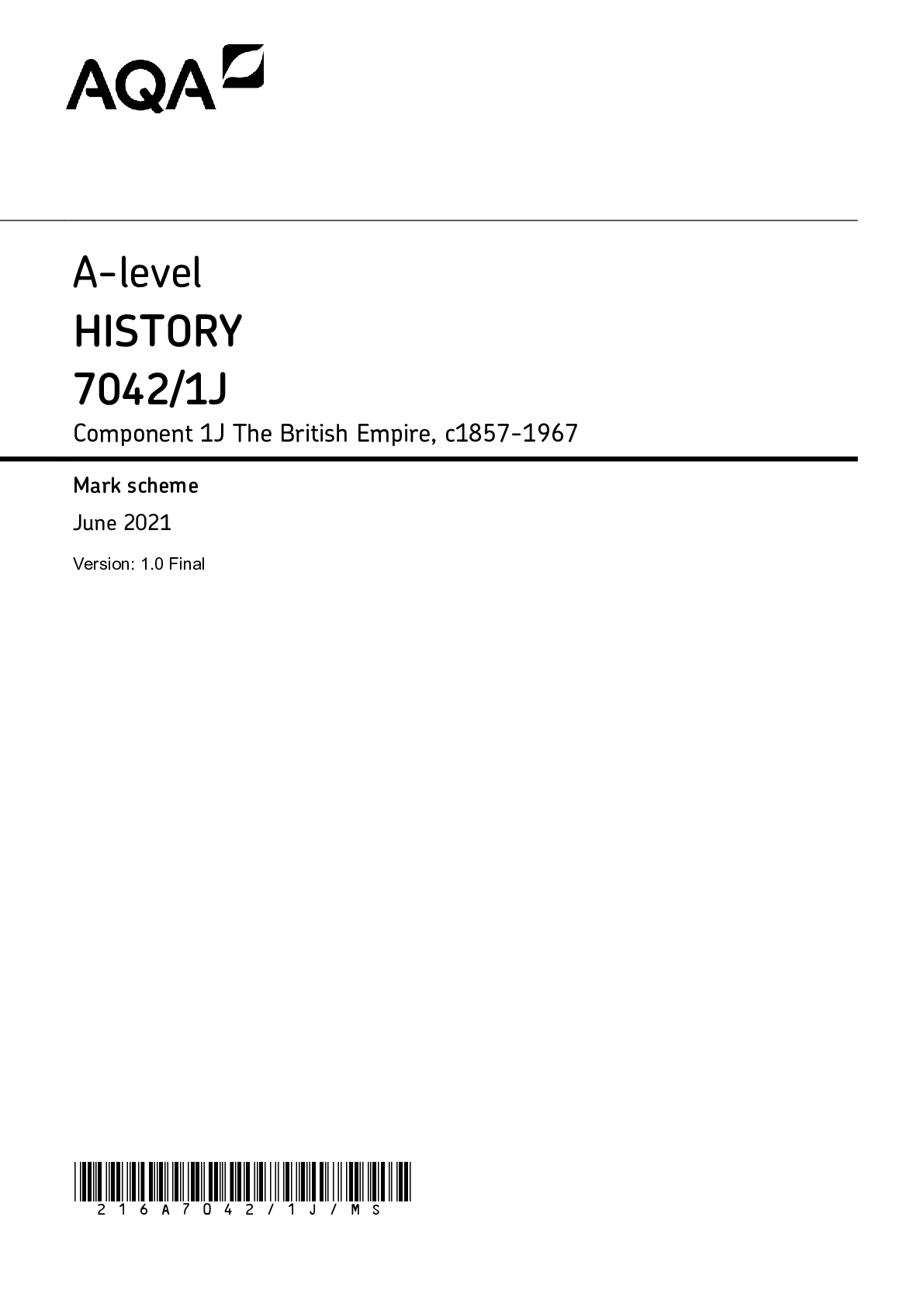
AQA A-level HISTORY 7042/1J Component 1J The British Empire, c1857-1967 Mark scheme June 2021 Version: 1.0 Final
$ 5
.png)
GA Adjuster Exam Review | Georgia Insurance Adjuster Questions and Answers
$ 9

PN3 Exam 3 Questions and answers with complete solution 100% satisfactory questions
$ 8
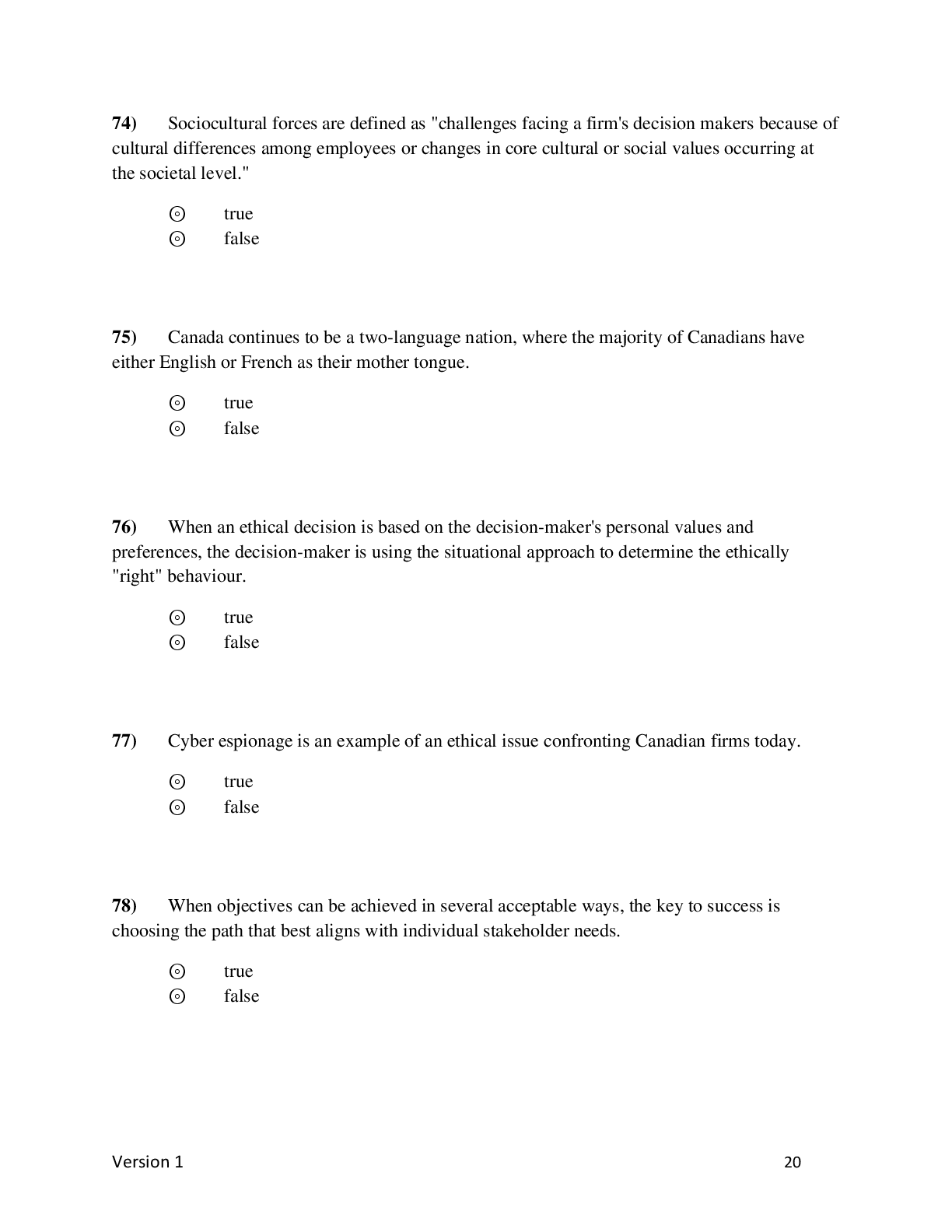
Test Bank Uggerslev, Wager, Fassina & Bulmash (2022) Human Resources Management, 13th Canadian Edition McGraw Hill Ryerson
$ 18
 - Paper 2.png)
AQA A-level BIOLOGY 2022 Paper 2
$ 12
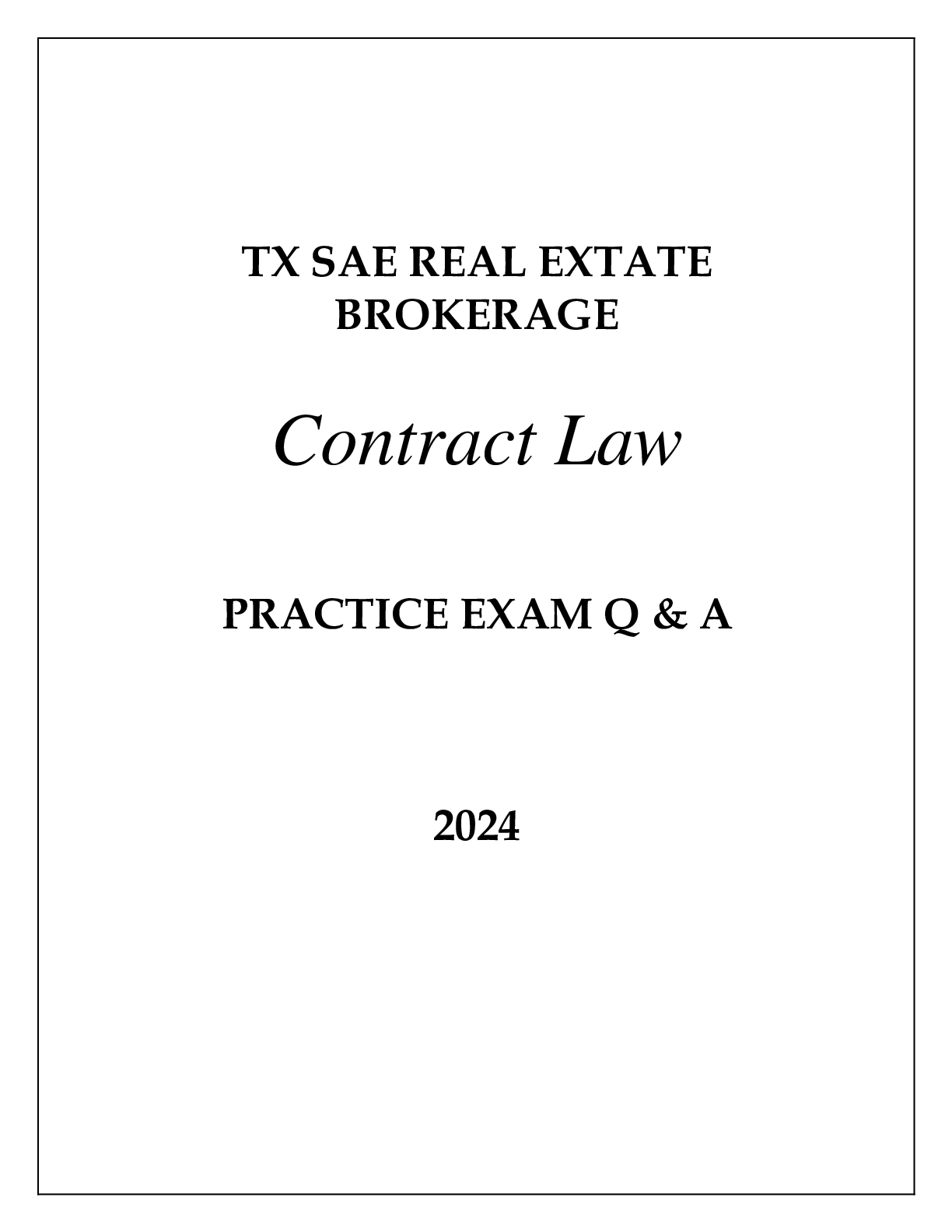
TX - SAE REAL ESTATE BROKERAGE (CONTRACT LAW) PRACTICE EXAM Q & A 2024
$ 12
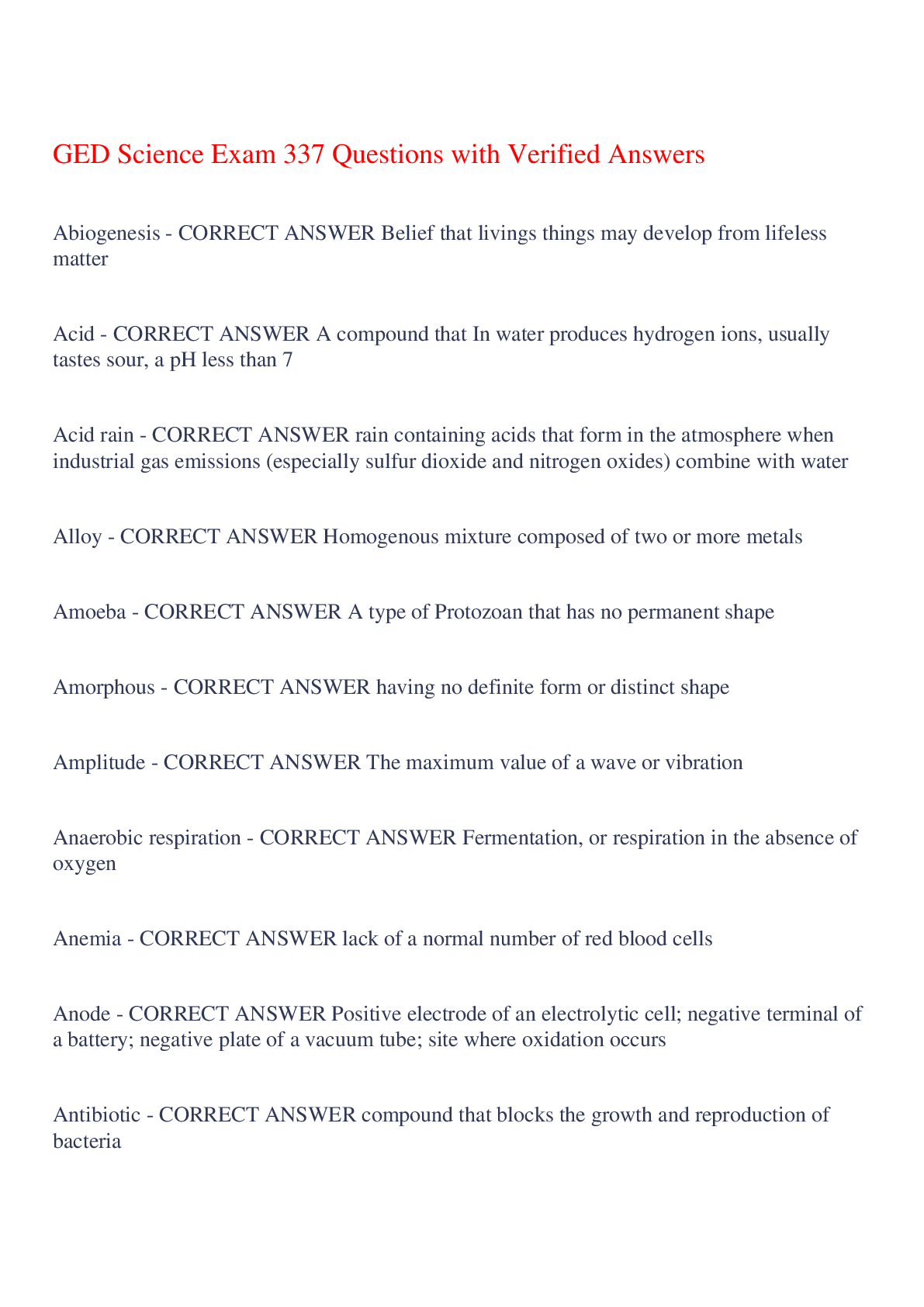
GED Science Exam 337 Questions with Verified Answers,100% CORRECT
$ 9.5
.png)
OSHA 30 Questions and Answers Already Passed
$ 10
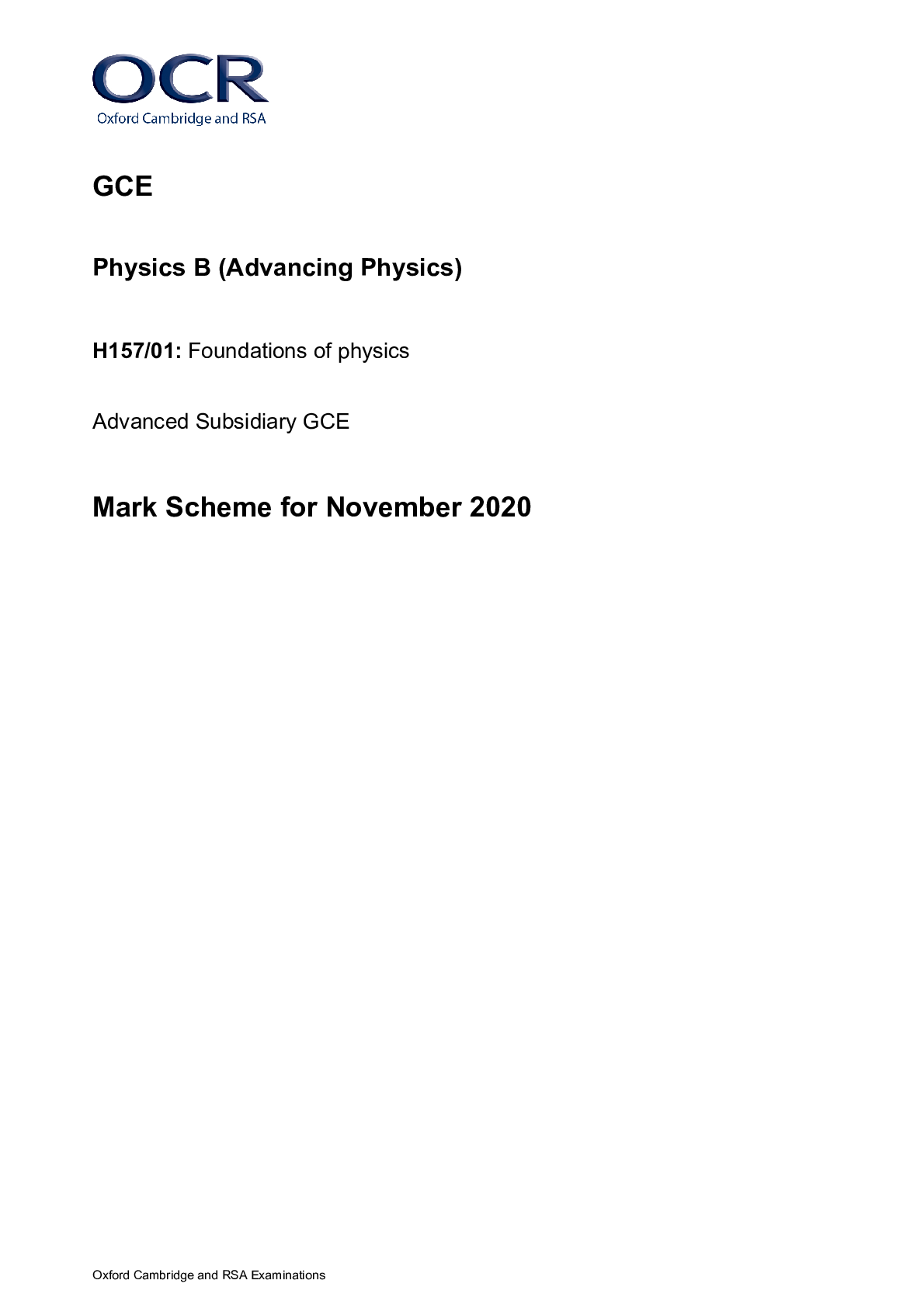
GCE Physics B (Advancing Physics) H157/01: Foundations of physics Advanced Subsidiary GCE Mark Scheme for November 2020
$ 7.5

CTS Exam Questions and Answers Already Passed
$ 10
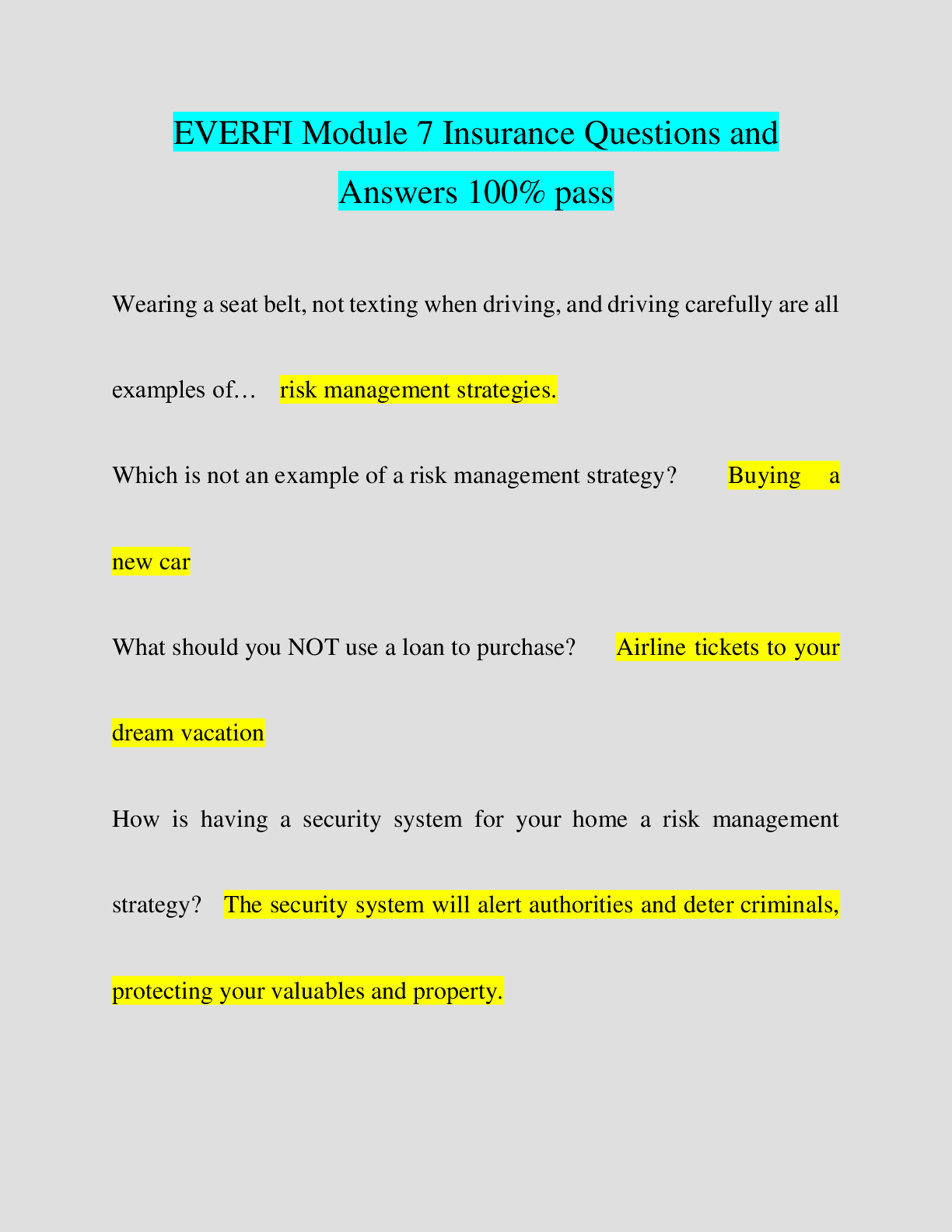
Everfi Module 7 Questions and Answers 100% pass
$ 13

Critical Paper: Fallacies in Arguments
$ 15

GCSE COMBINED SCIENCE: TRILOGY – PHYSICS PAPER 2F (FOUNDATION TIER) 2024/2025
$ 11.5

D482 SECURE NETWORK DESIGN TASK 1 WESTERN GOVERNORS’ UNIVERSITY
$ 14
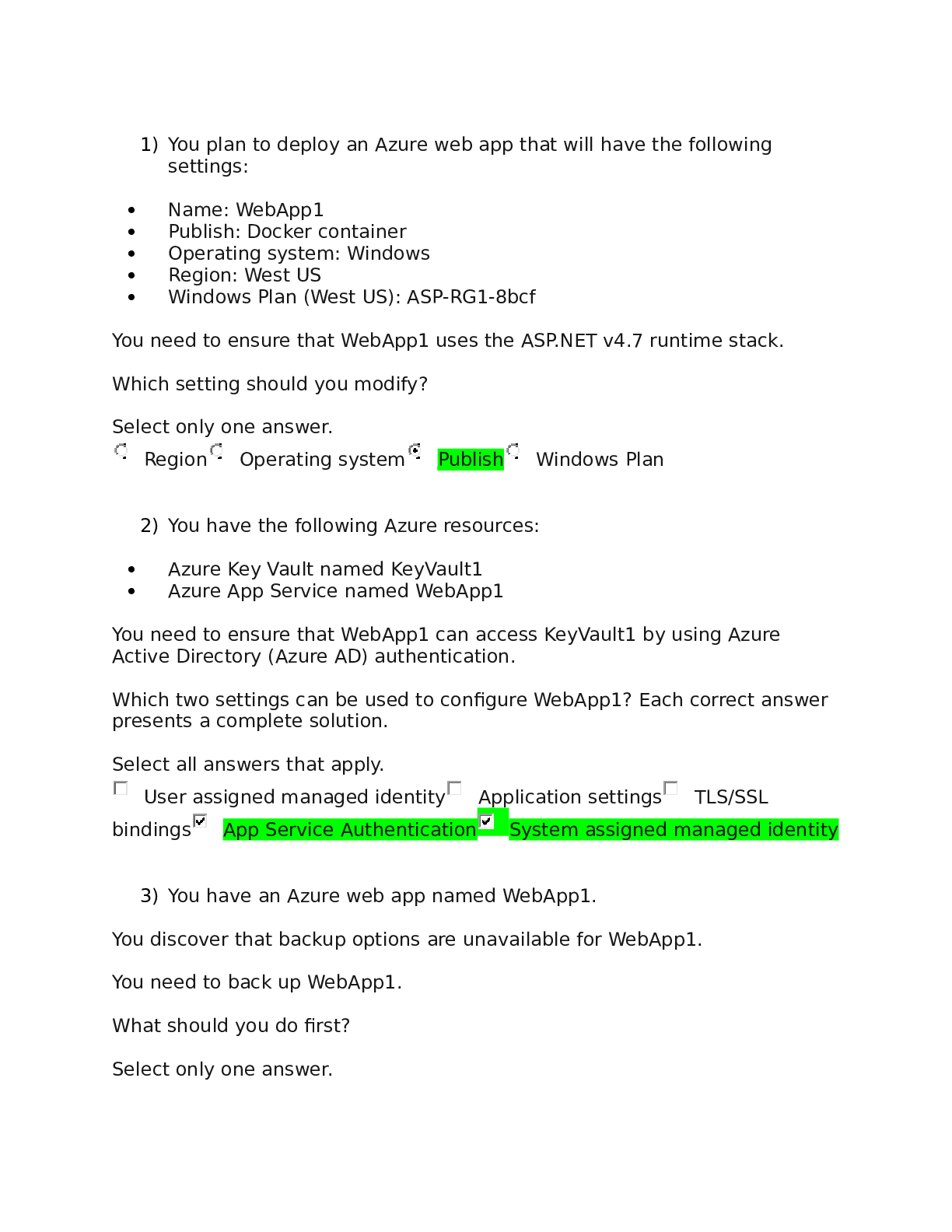
AZ-104 Renewal Exam Questions and Answers 2022 All Answers Available
$ 8.5
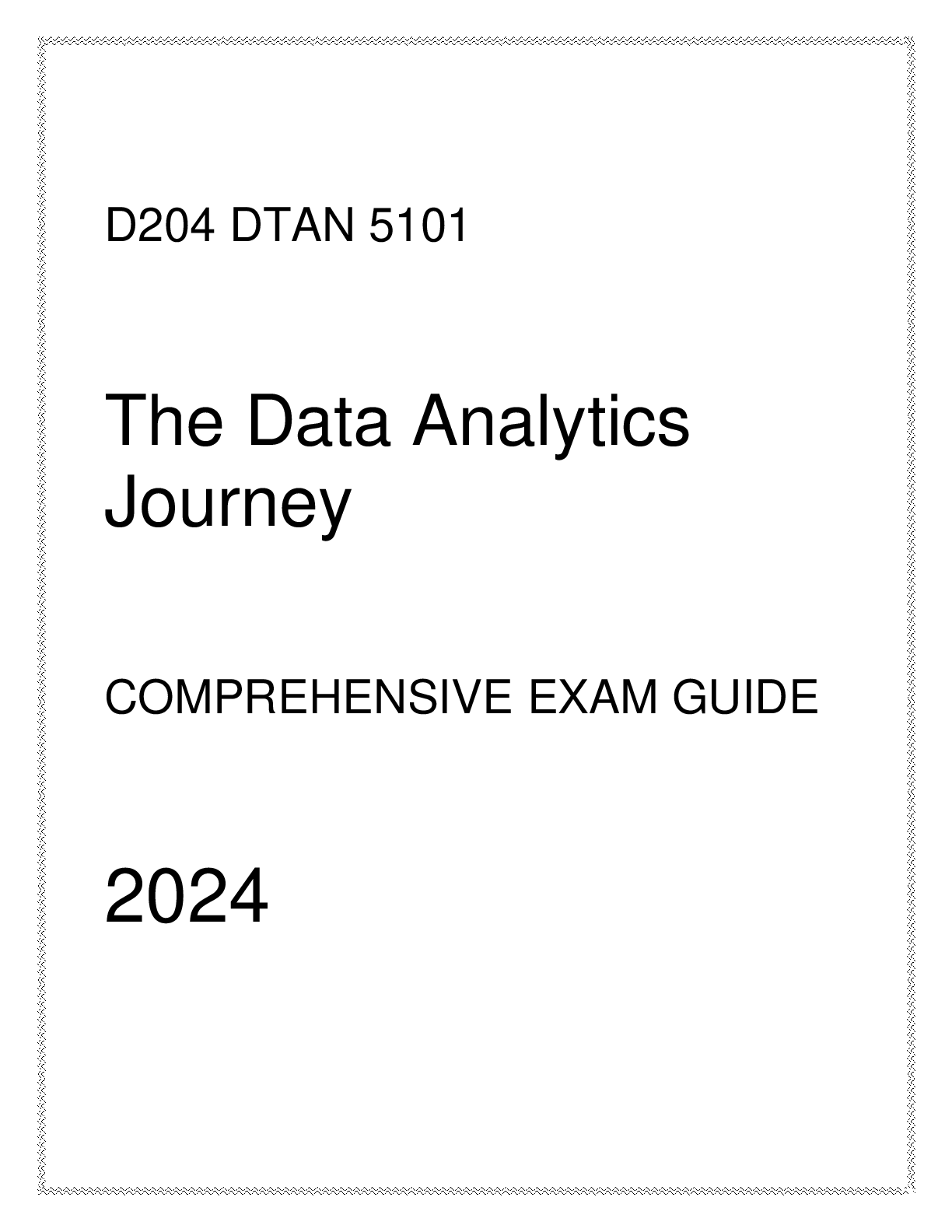
WGU D204 - DTAN 5101 The Data Analytics Journey - Comprehensive Exam Guide 2024
$ 11

FTCE Subject Area Exam K-6 Practice Questions and Correct Answers
$ 9

Pearson Edexcel GCSE In Physics (1PH0) Paper 2H. Mark Scheme (Results) November 2021
$ 4.5

CPPO Practice Exam 2023-2024 with Questions and Answers
$ 8
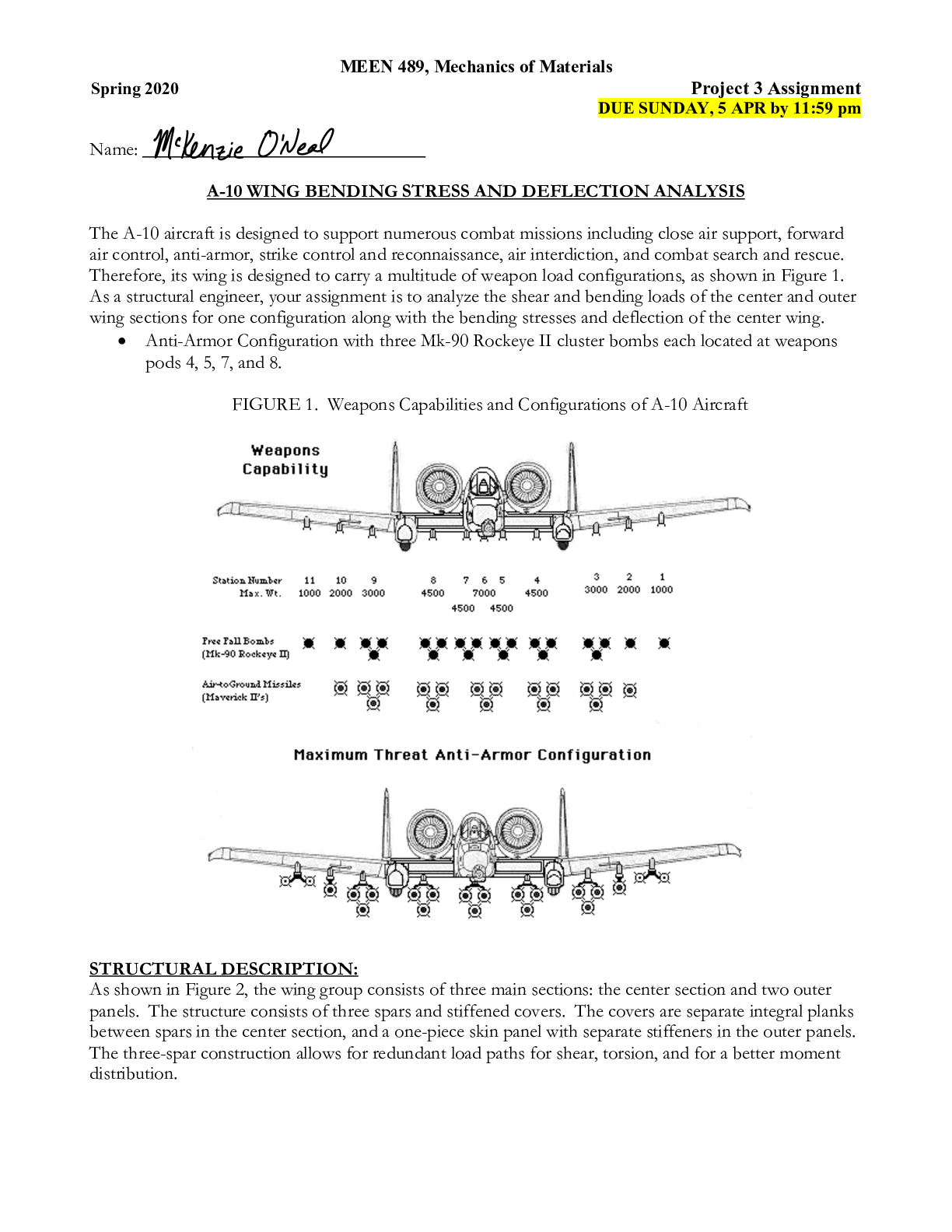
Texas A&M University - MEEN 489489Proj3final.

